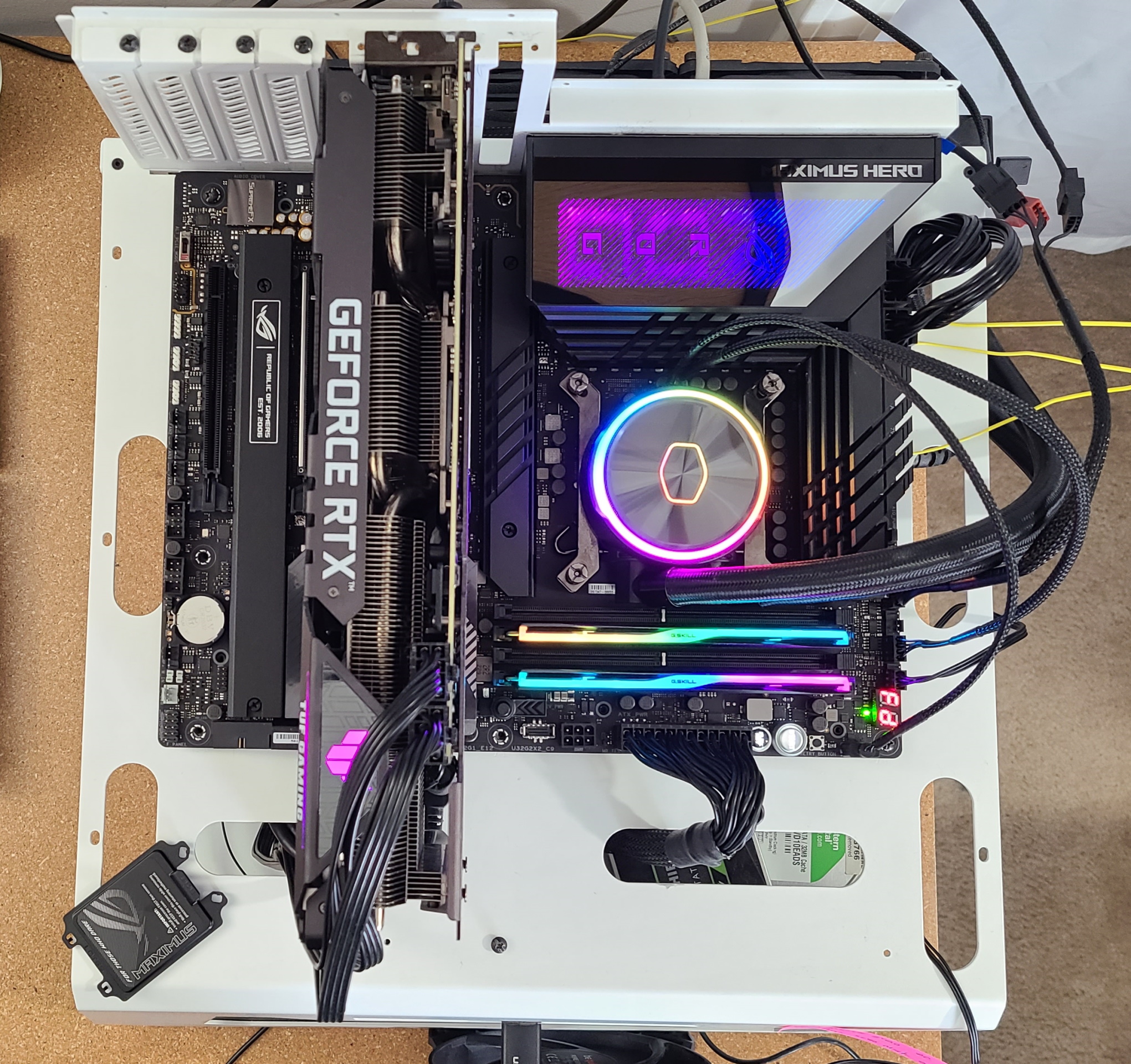Why you can trust Tom's Hardware
Firmware
Asus’ BIOS on the Z790 Hero is the same as we’re used to but made updated to support the latest Intel processors. The BIOS sports the familiar black, red, and yellow ROG theme that’s easy to read. Asus starts out in an Easy Mode that displays high-level information, including CPU and memory clock speeds, temperatures, fan speeds, storage information, etc. Advanced Mode has several headers across the top that drop down additional options. The BIOS is one of my favorites, as almost everything you need isn’t buried deep within menus.
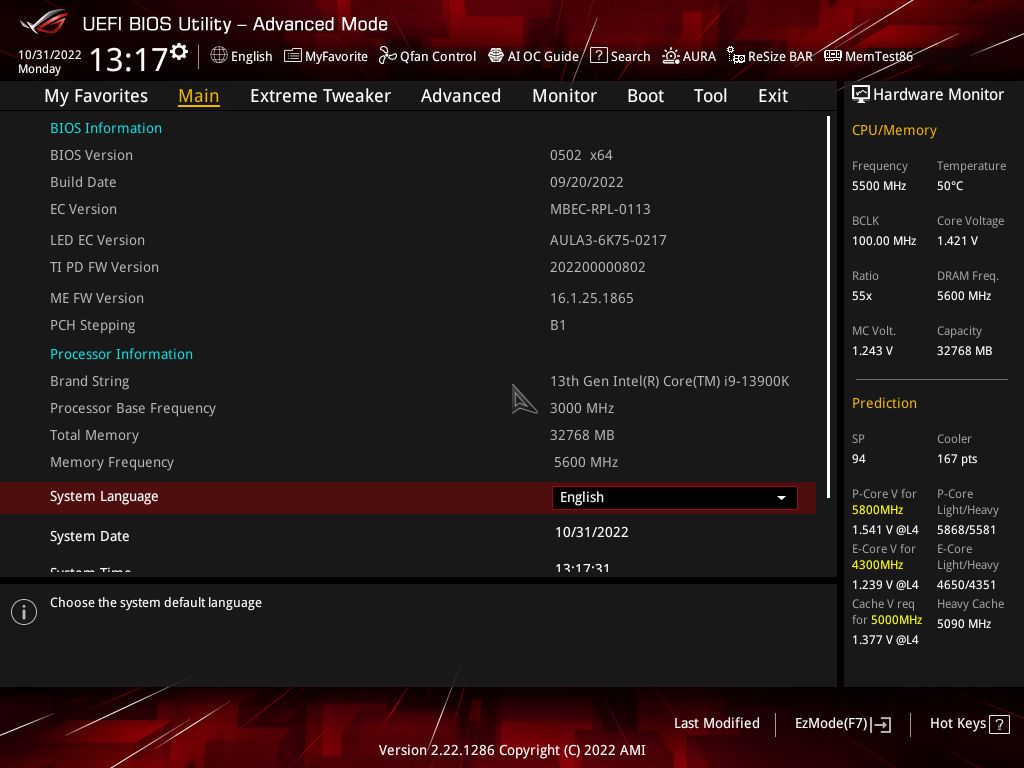


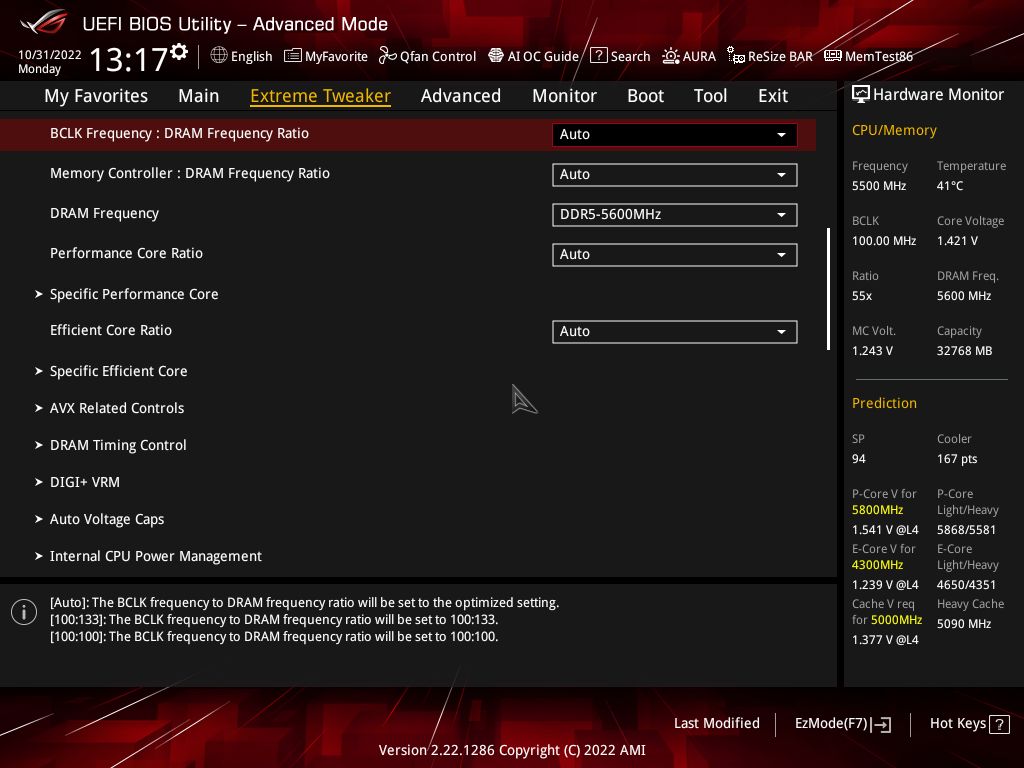

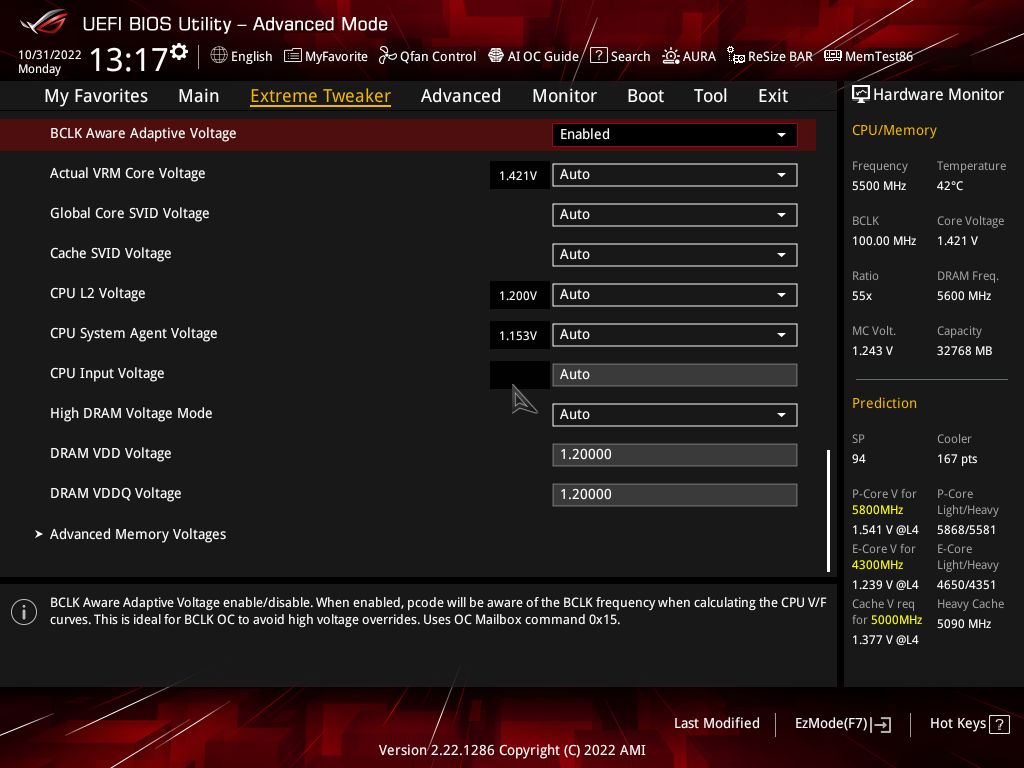
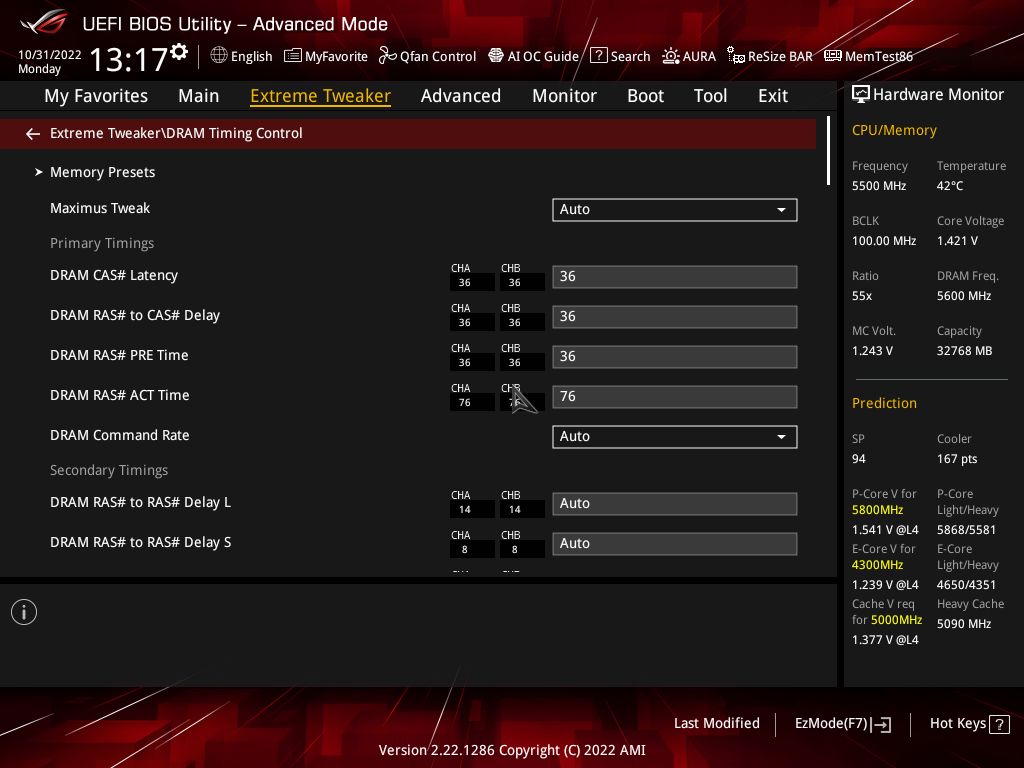

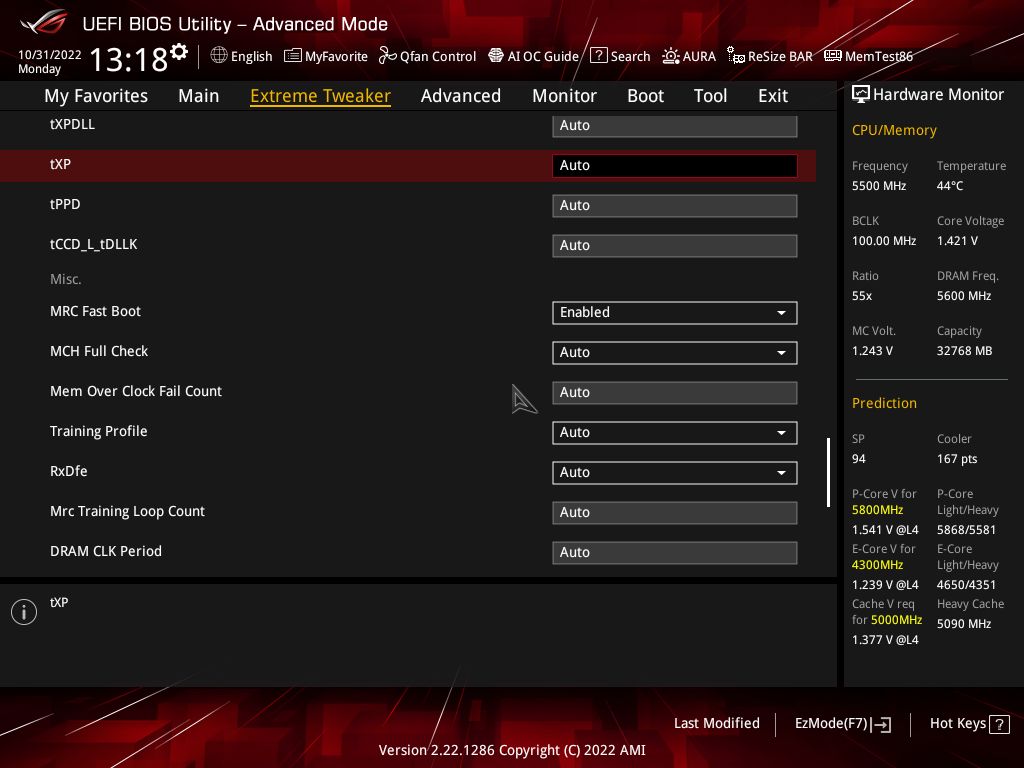
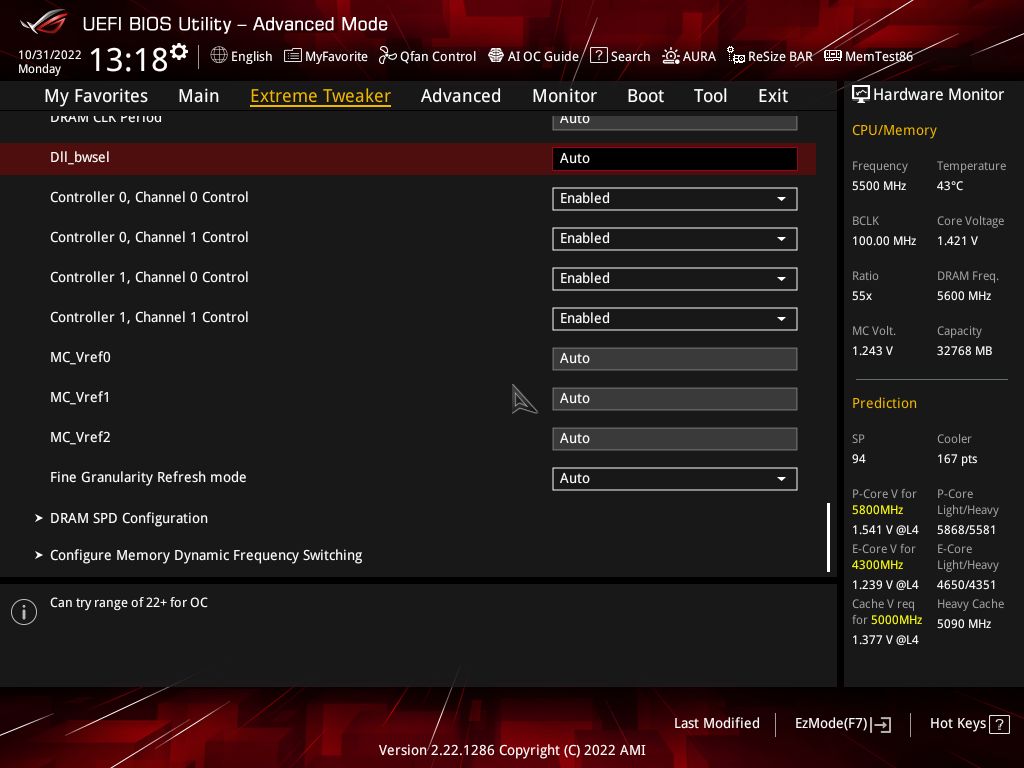
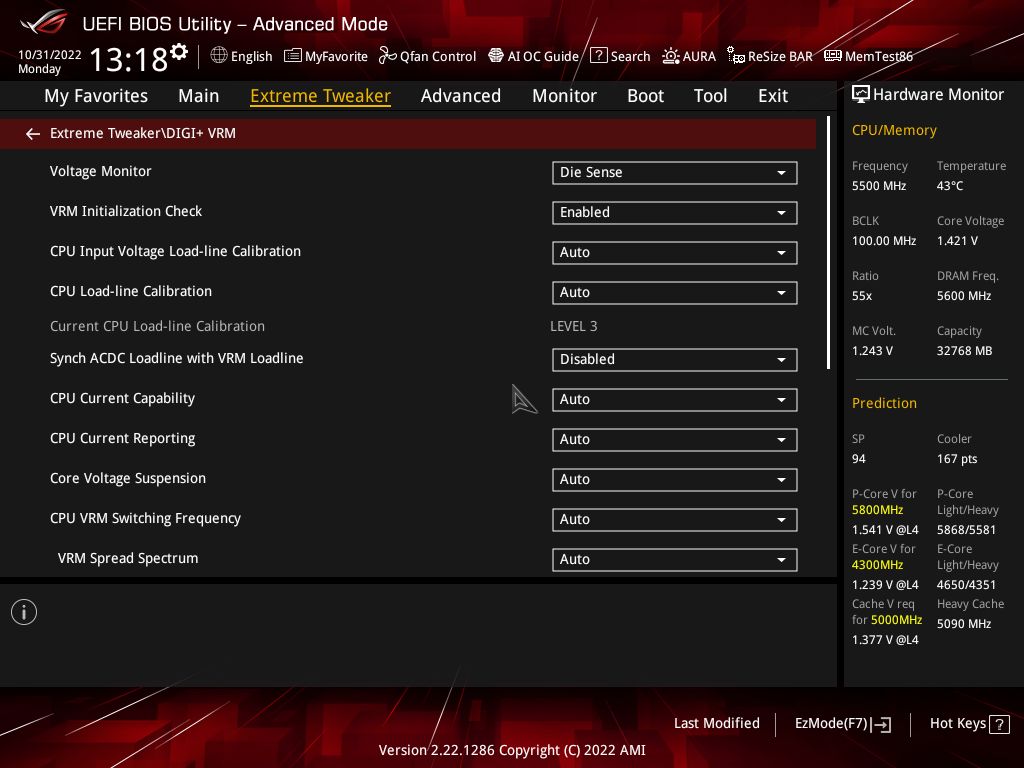
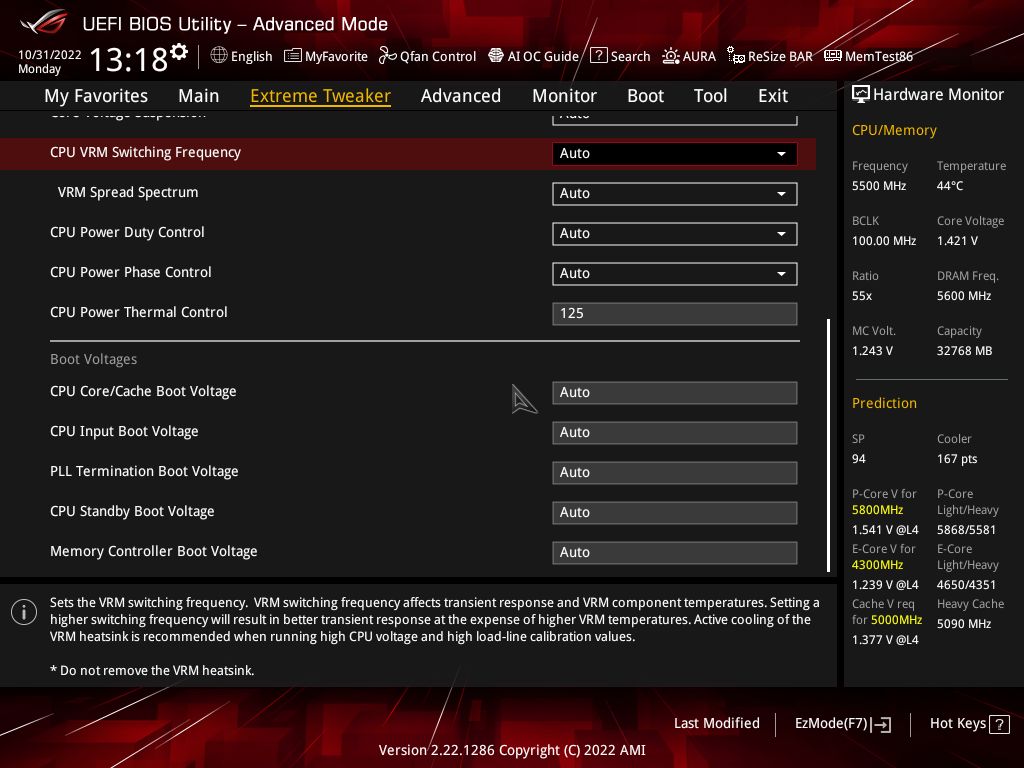

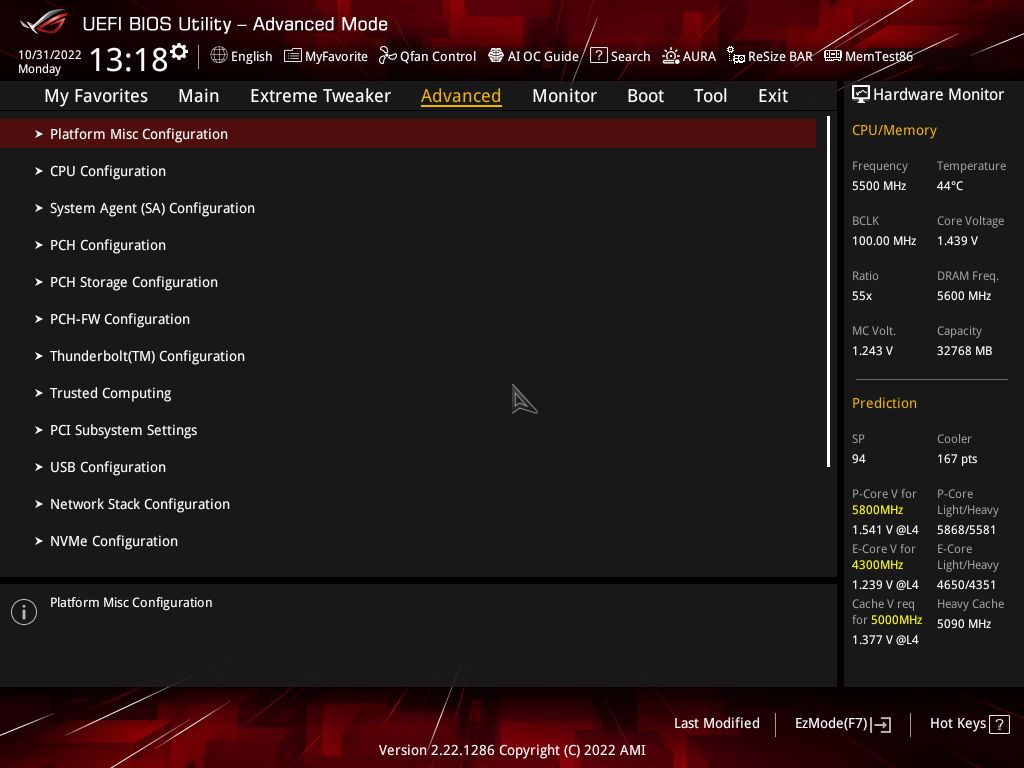
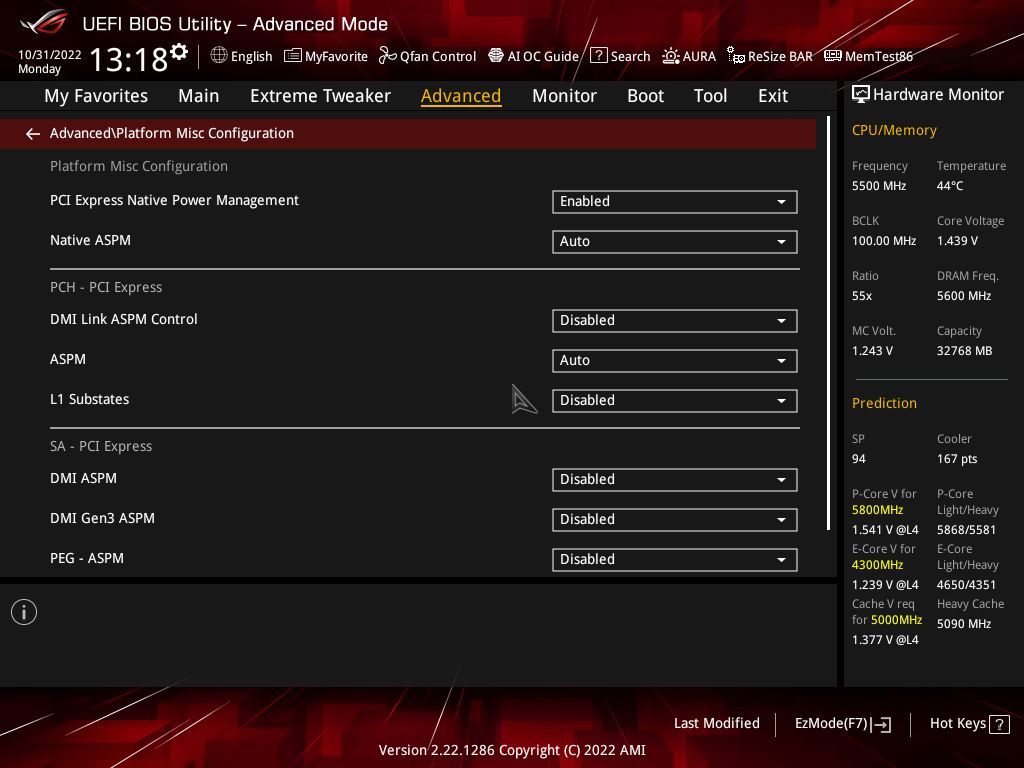
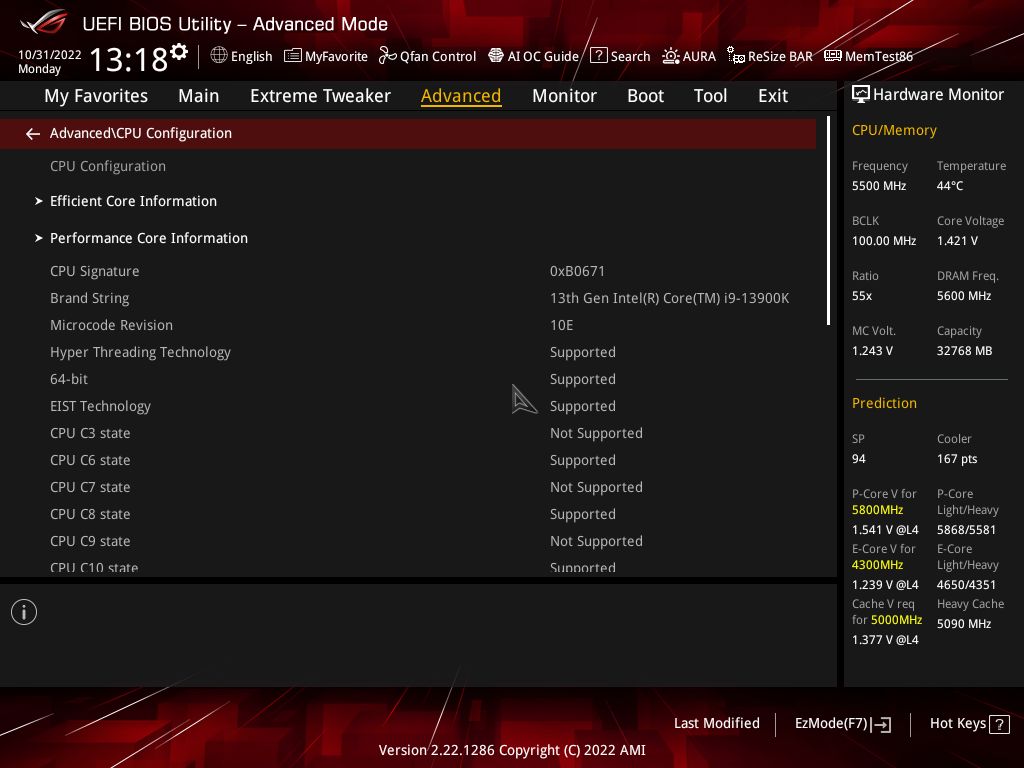
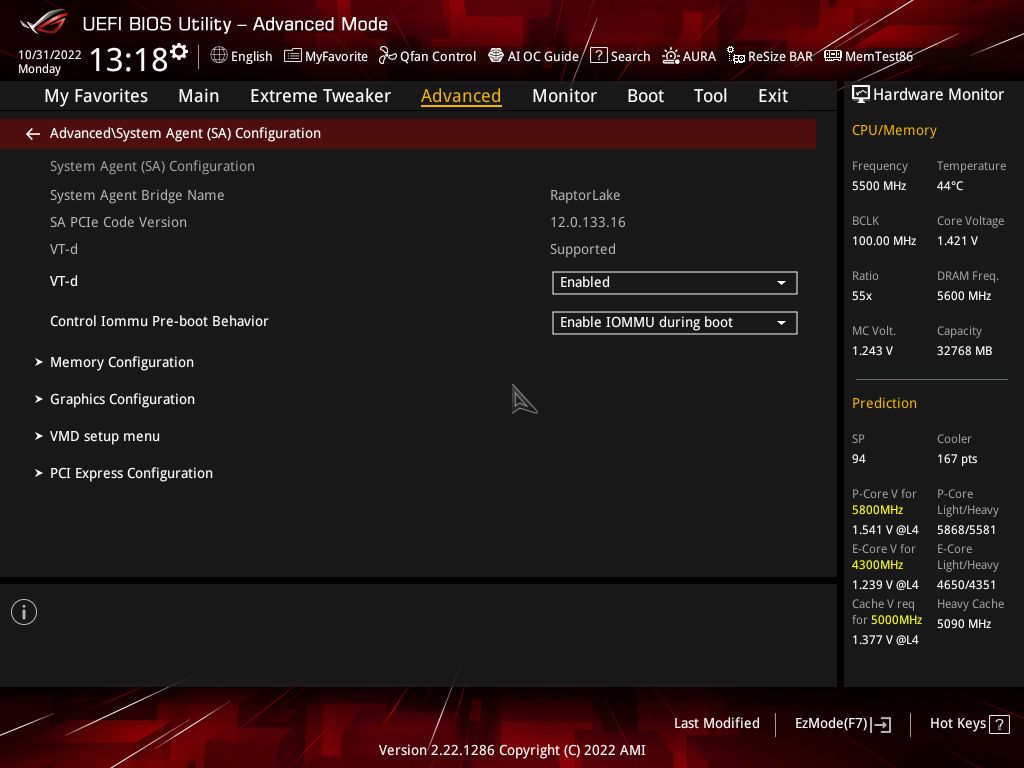
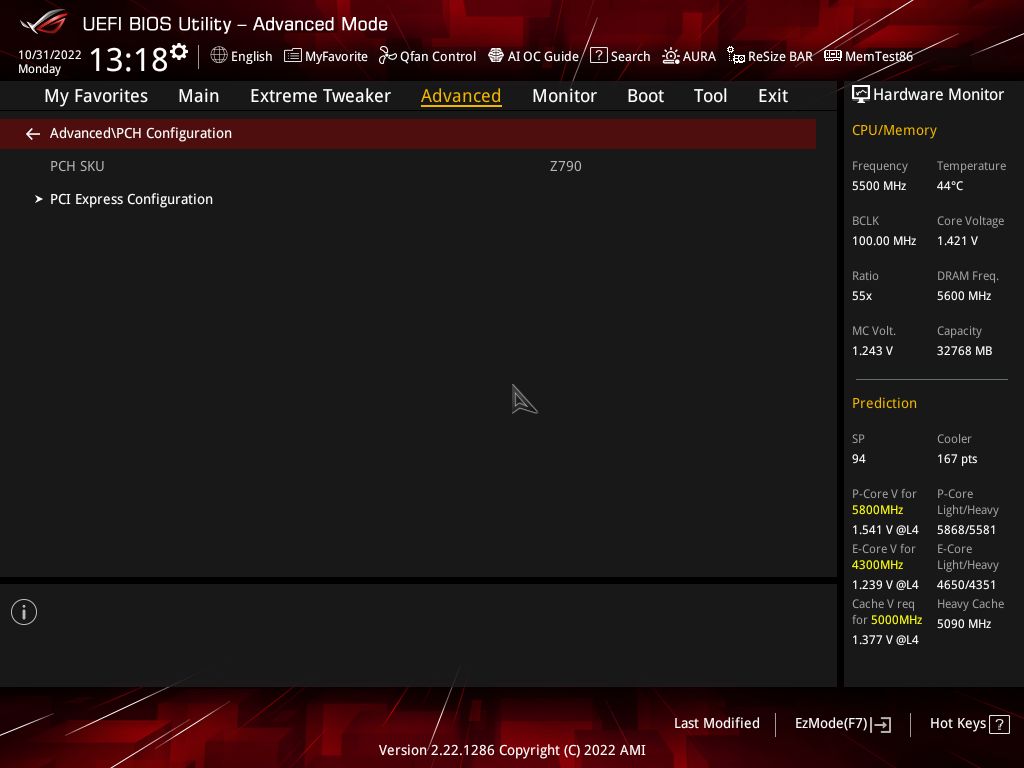
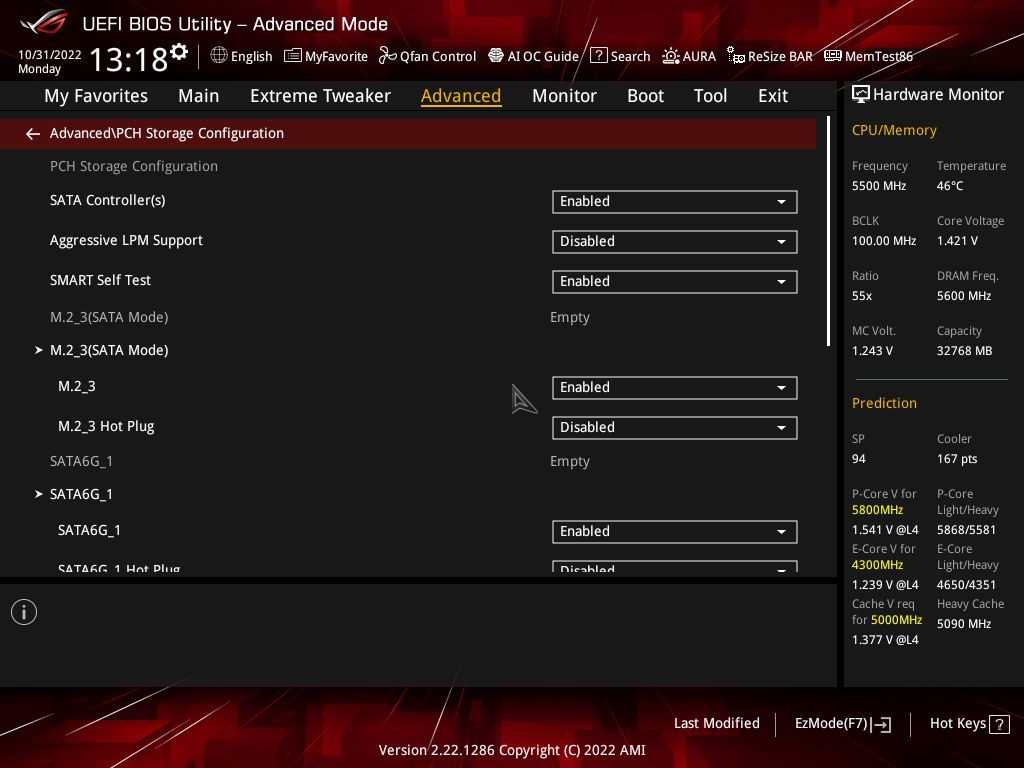
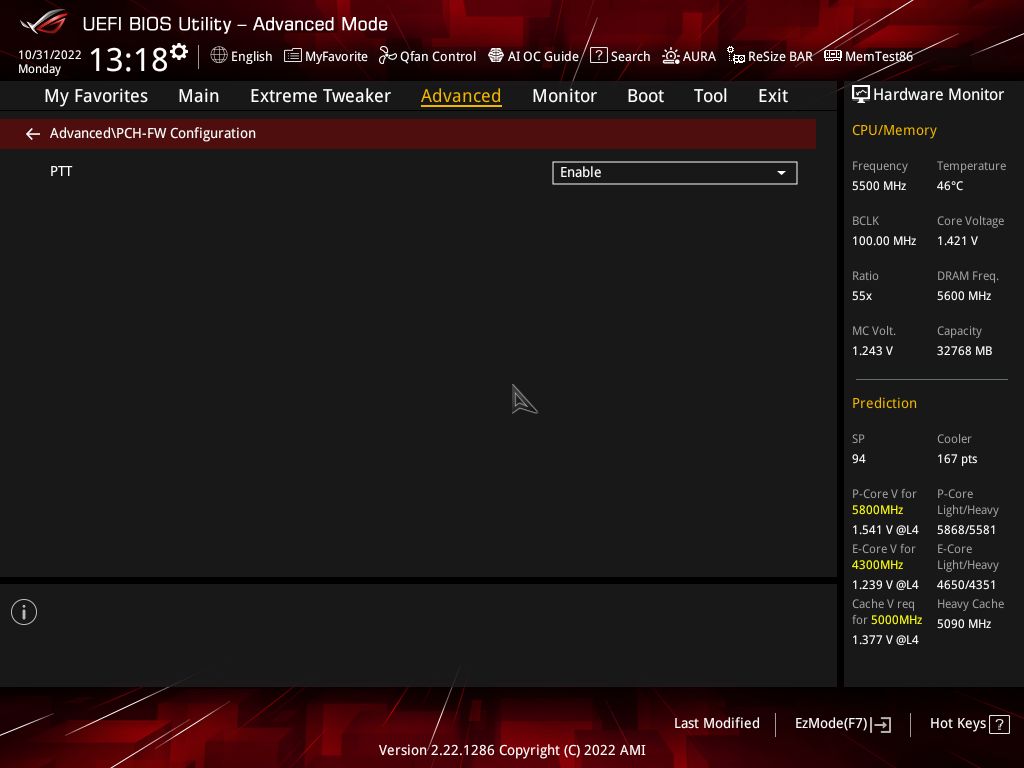
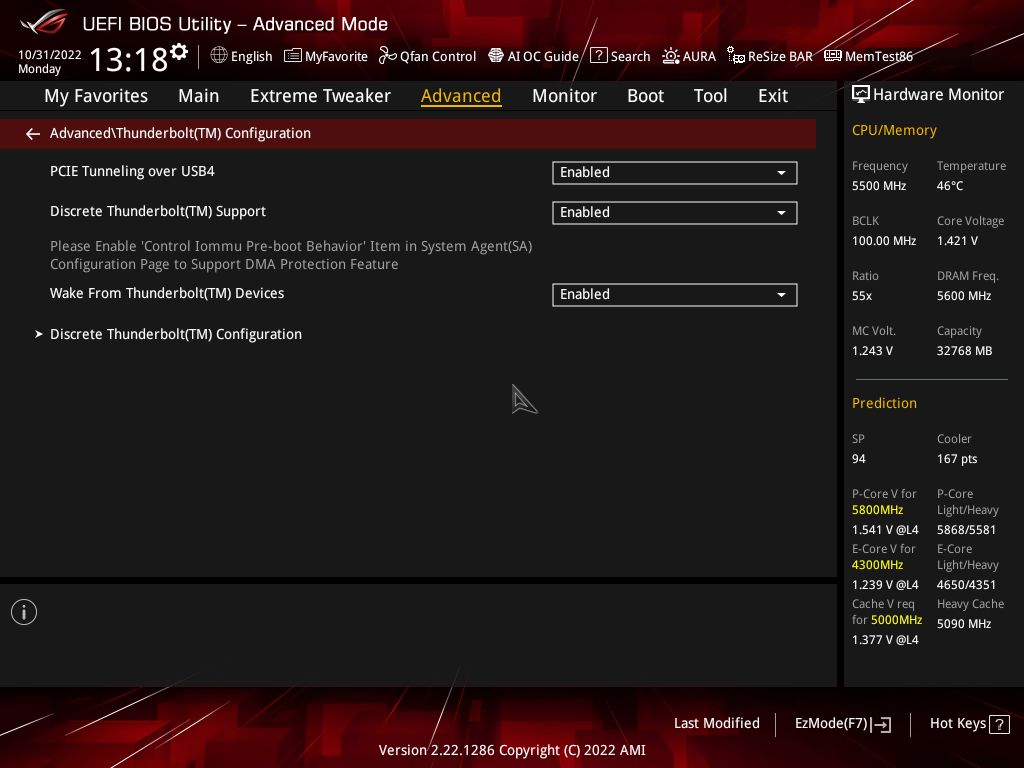
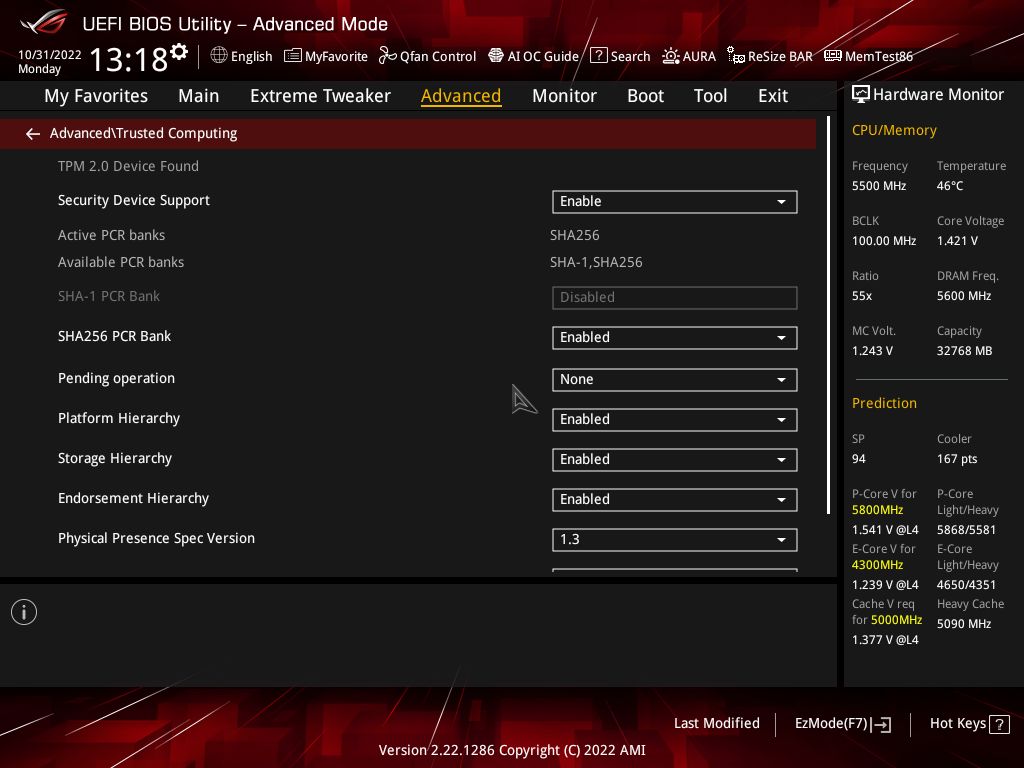
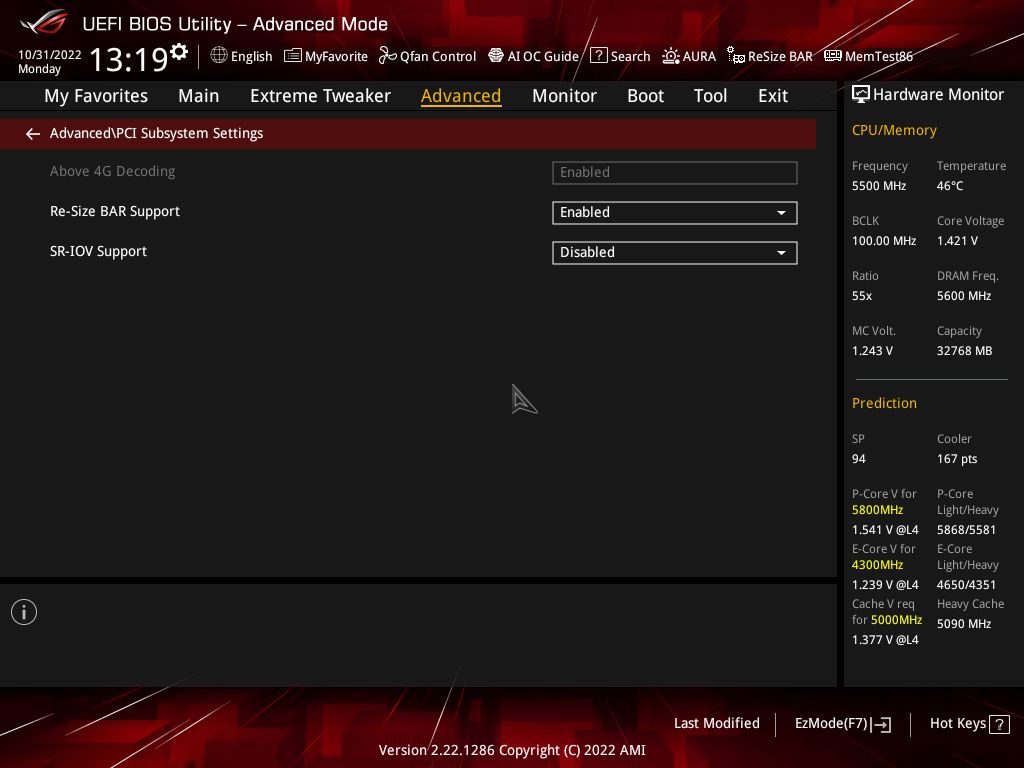

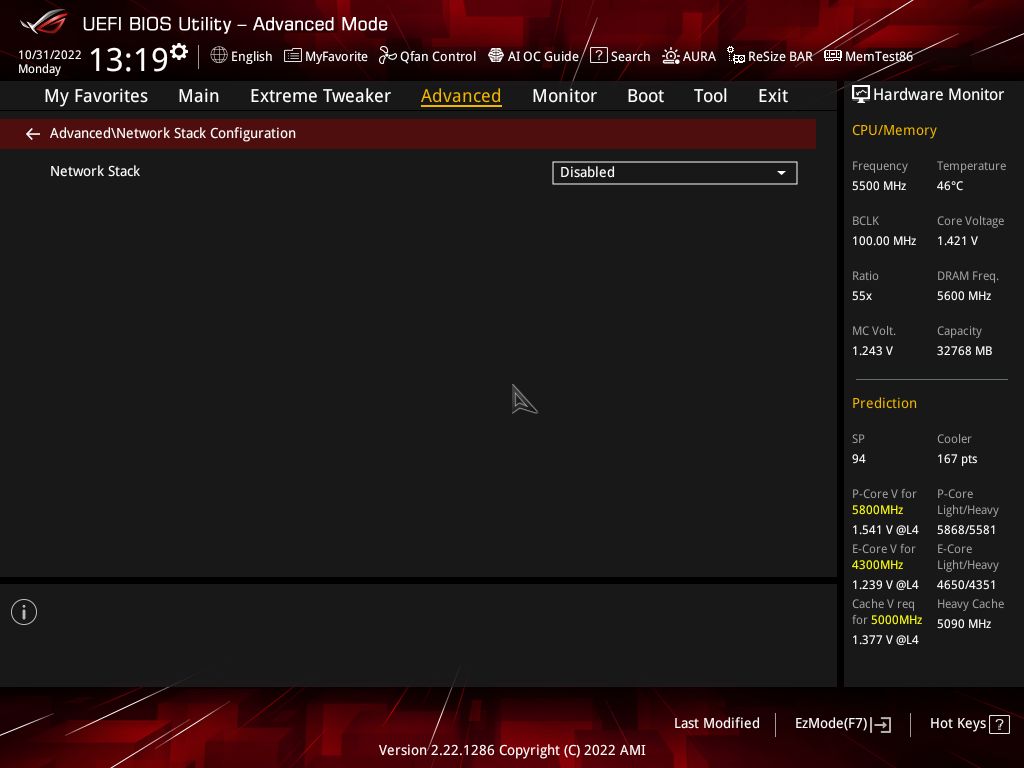
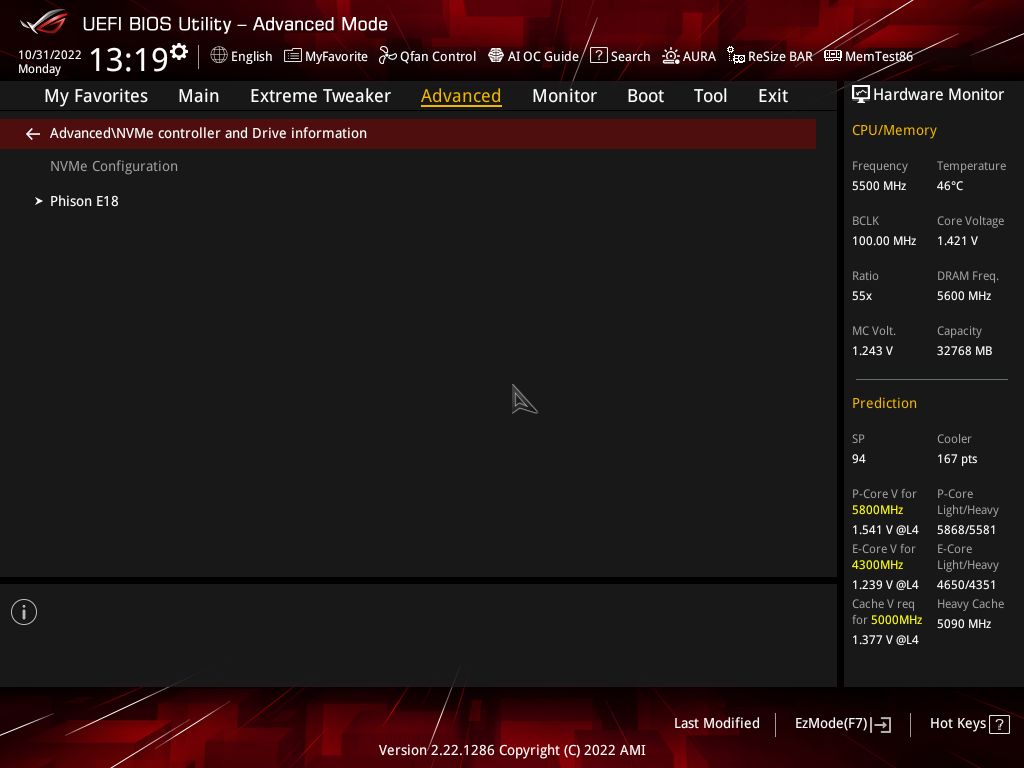
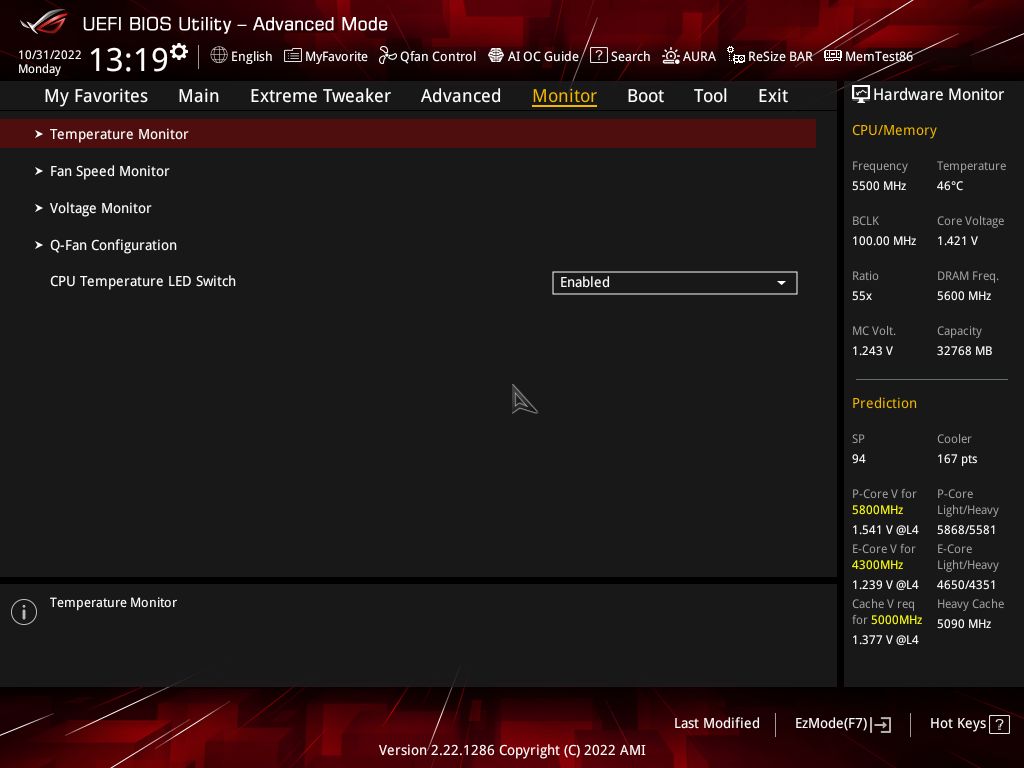
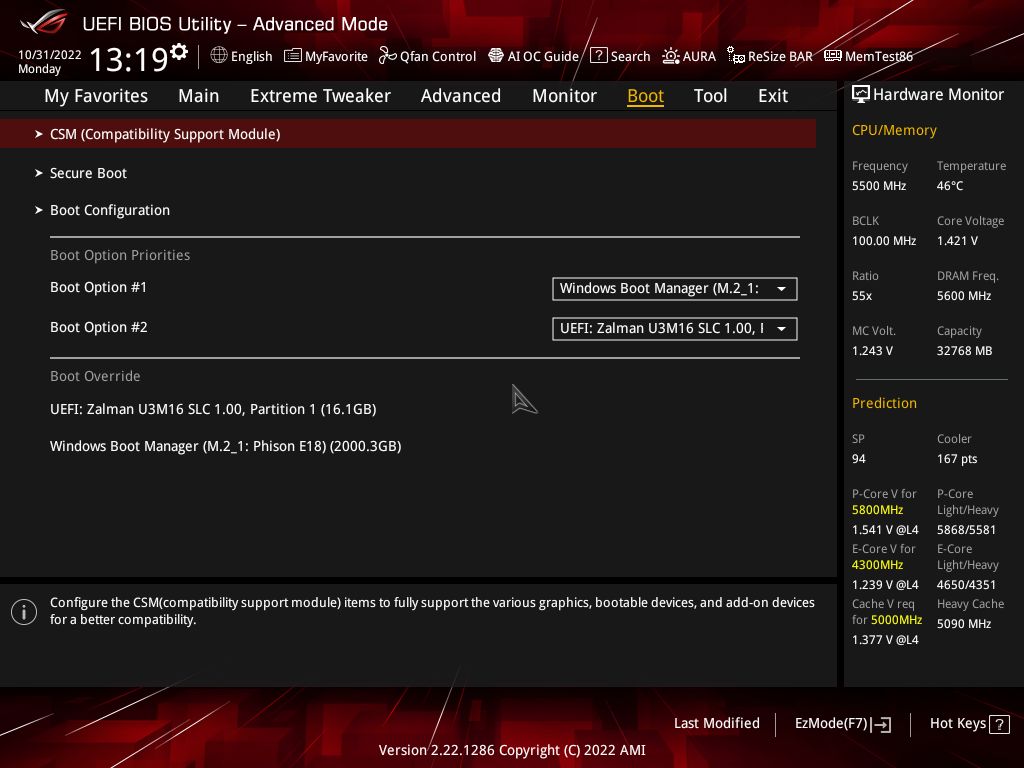

Software
Asus’ software suite is still the same but updated to support the AMD processors. There are several applications for various functions, ranging from RGB lighting control, audio, system monitoring, overclocking, etc. We’ve captured several screenshots of the applications below. Here’s a look at Ai Suite 3, Armoury Crate, Sonic Studio and the Realtek Audio application.
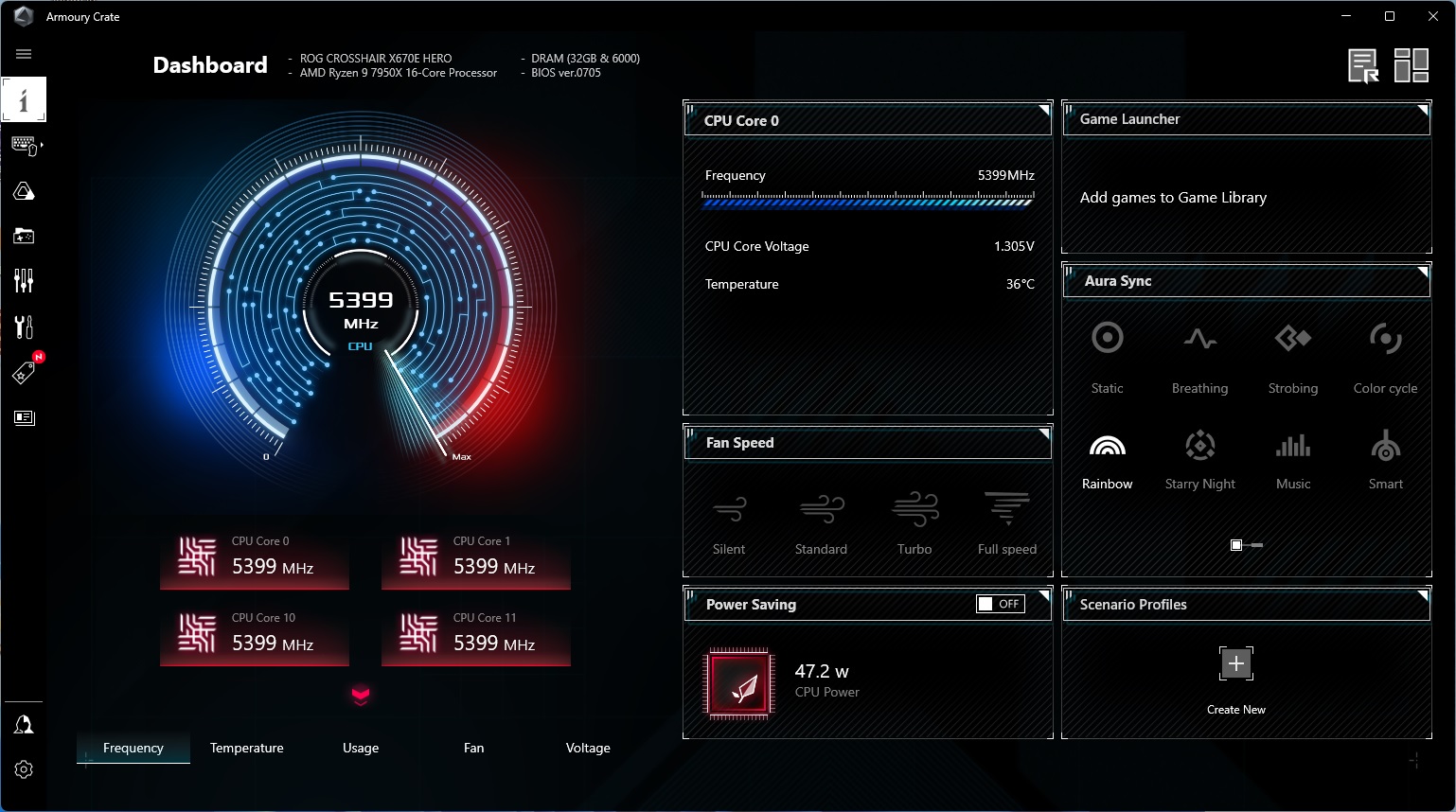
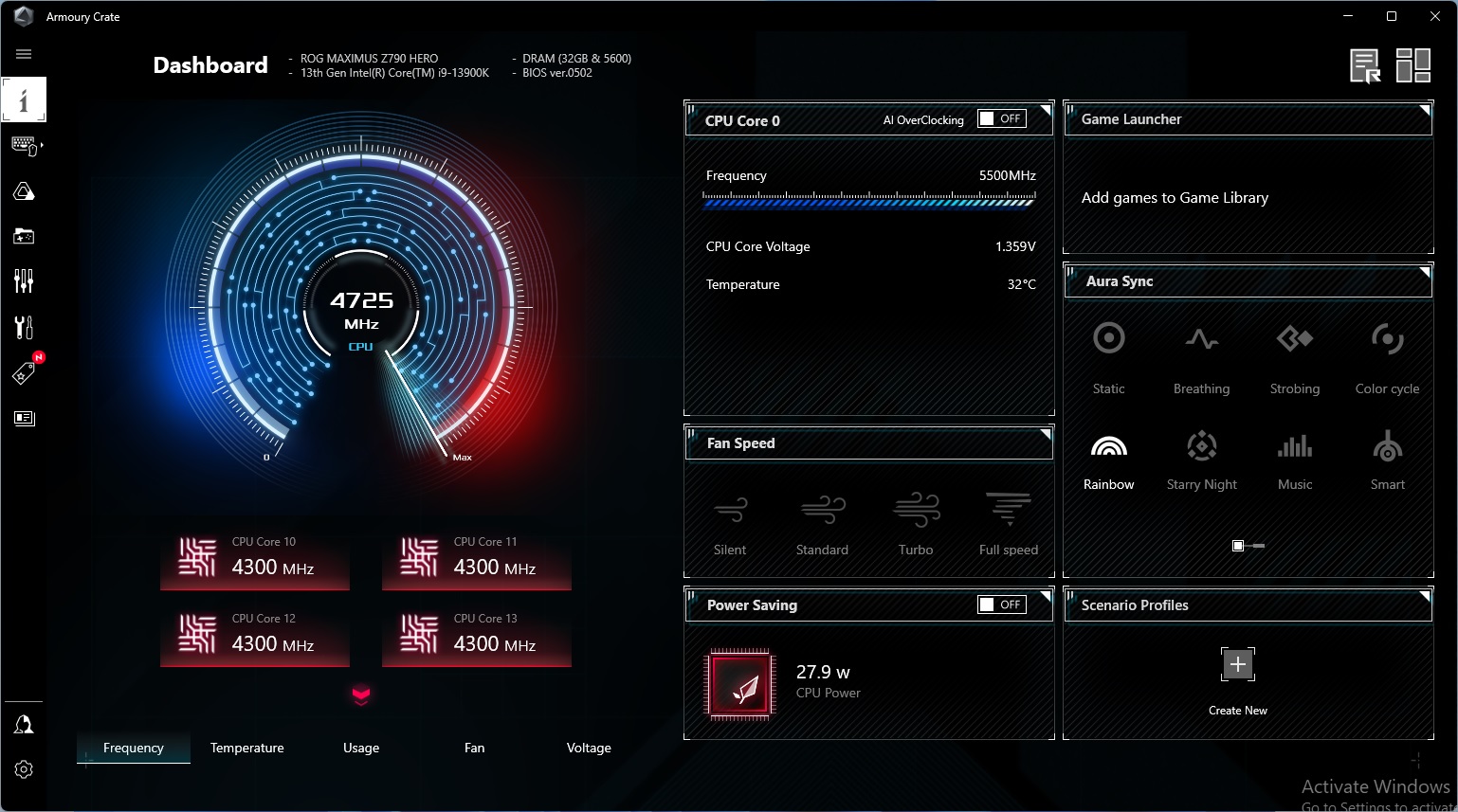
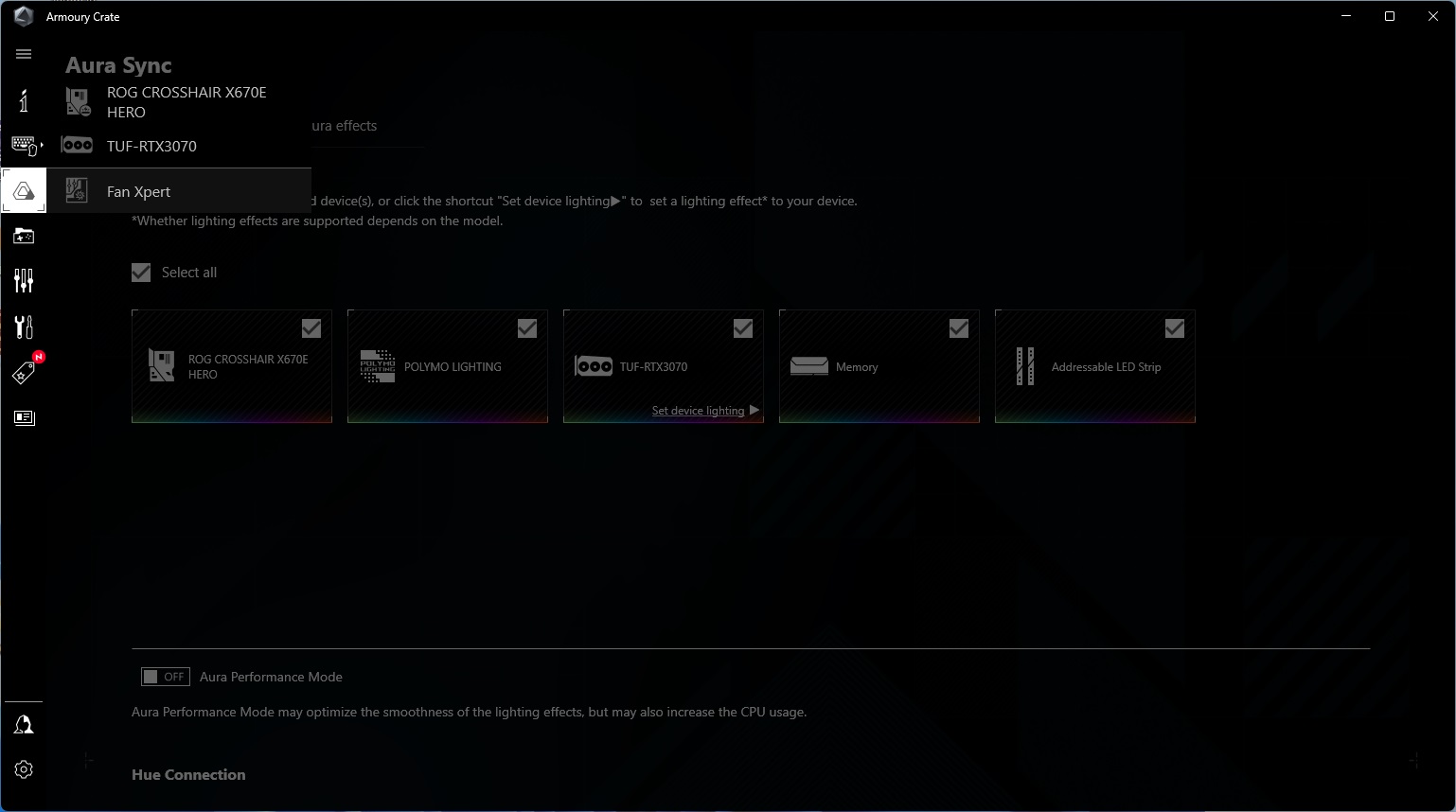




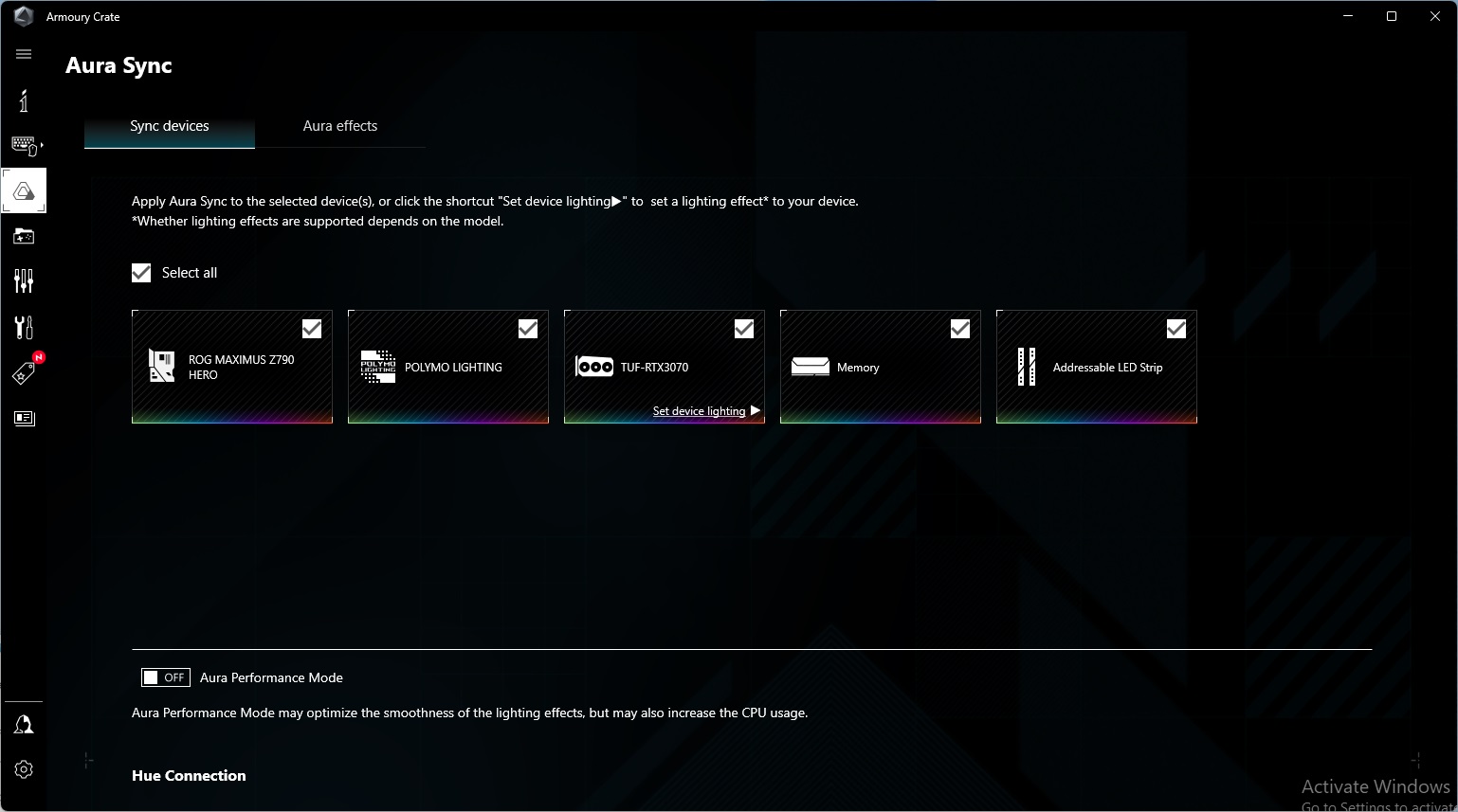
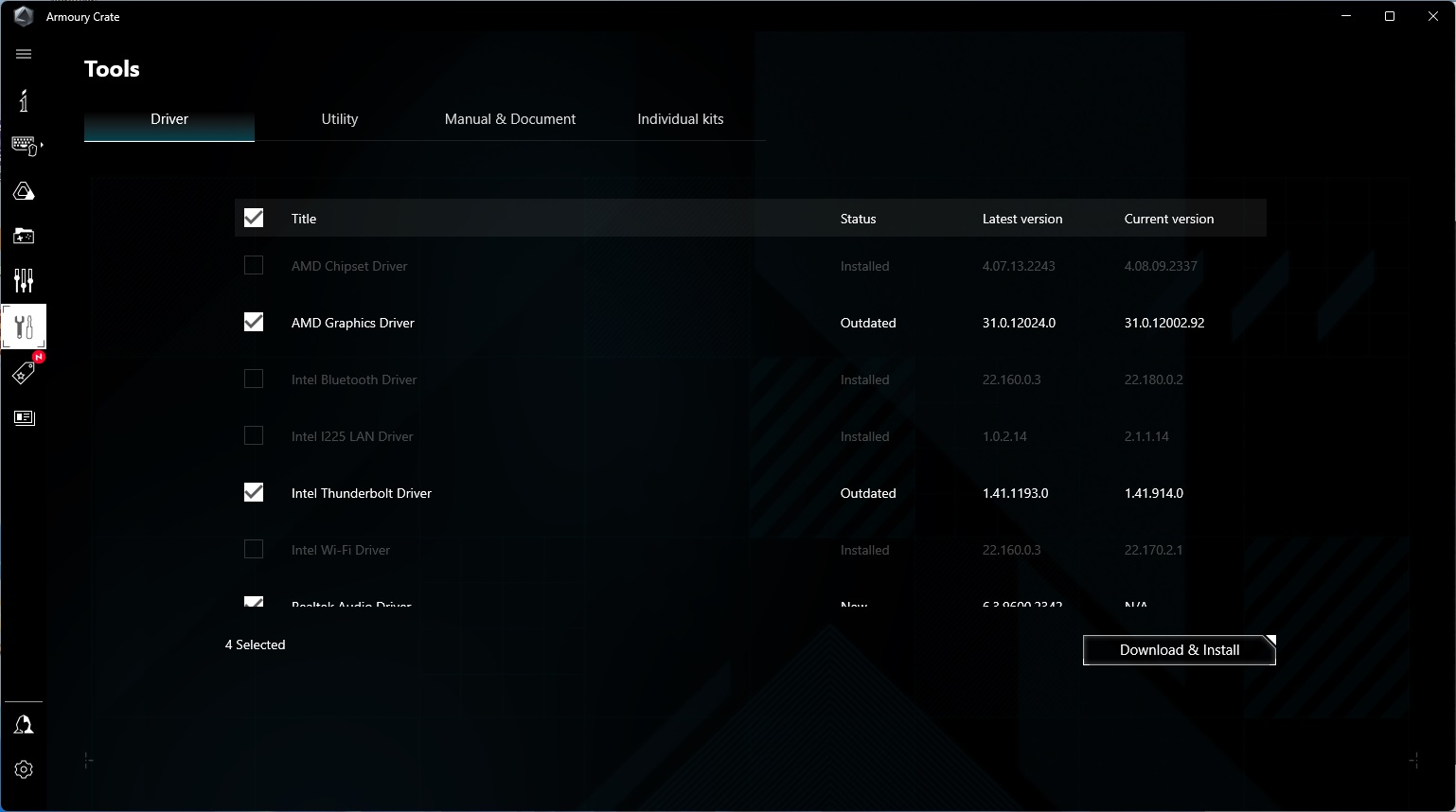
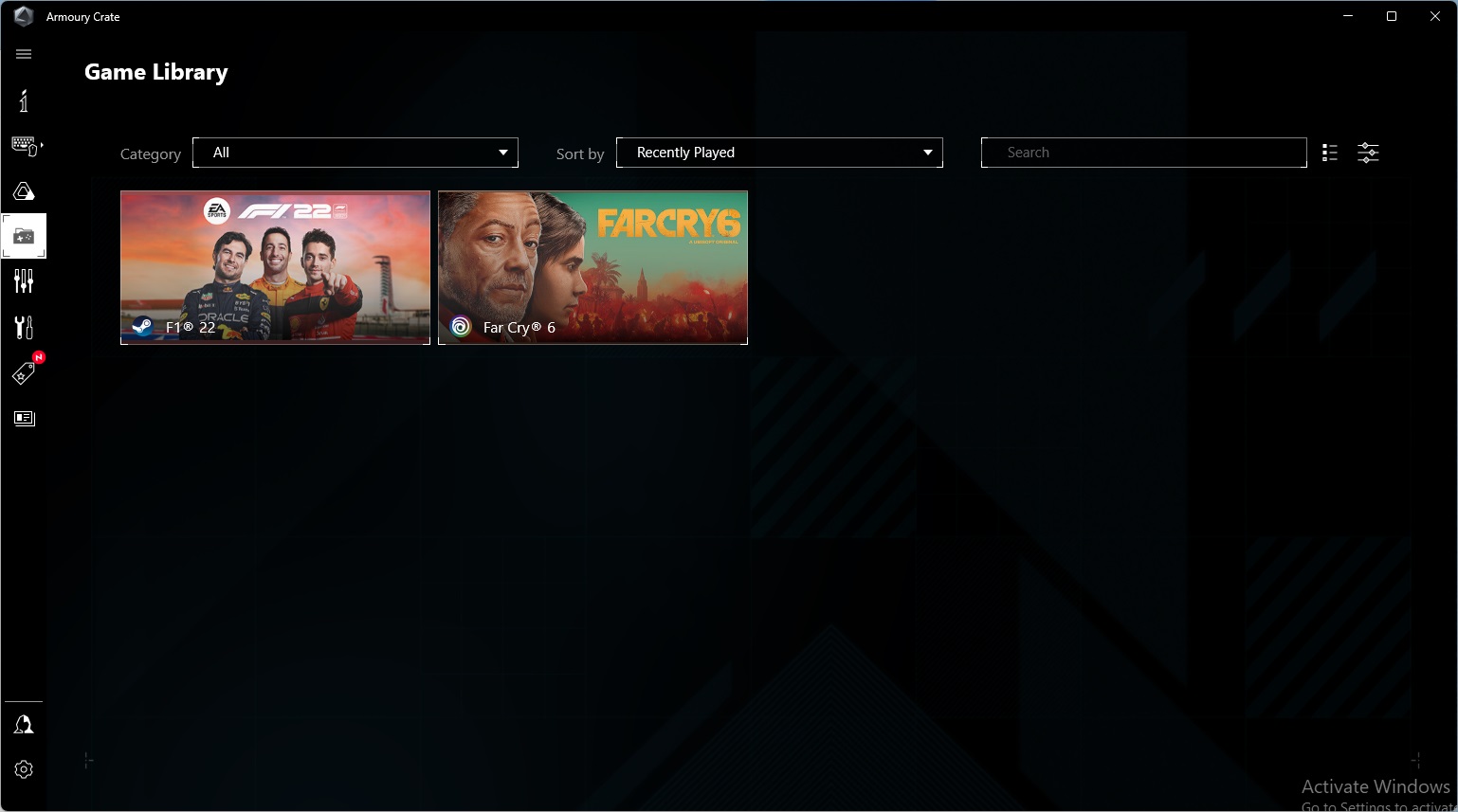
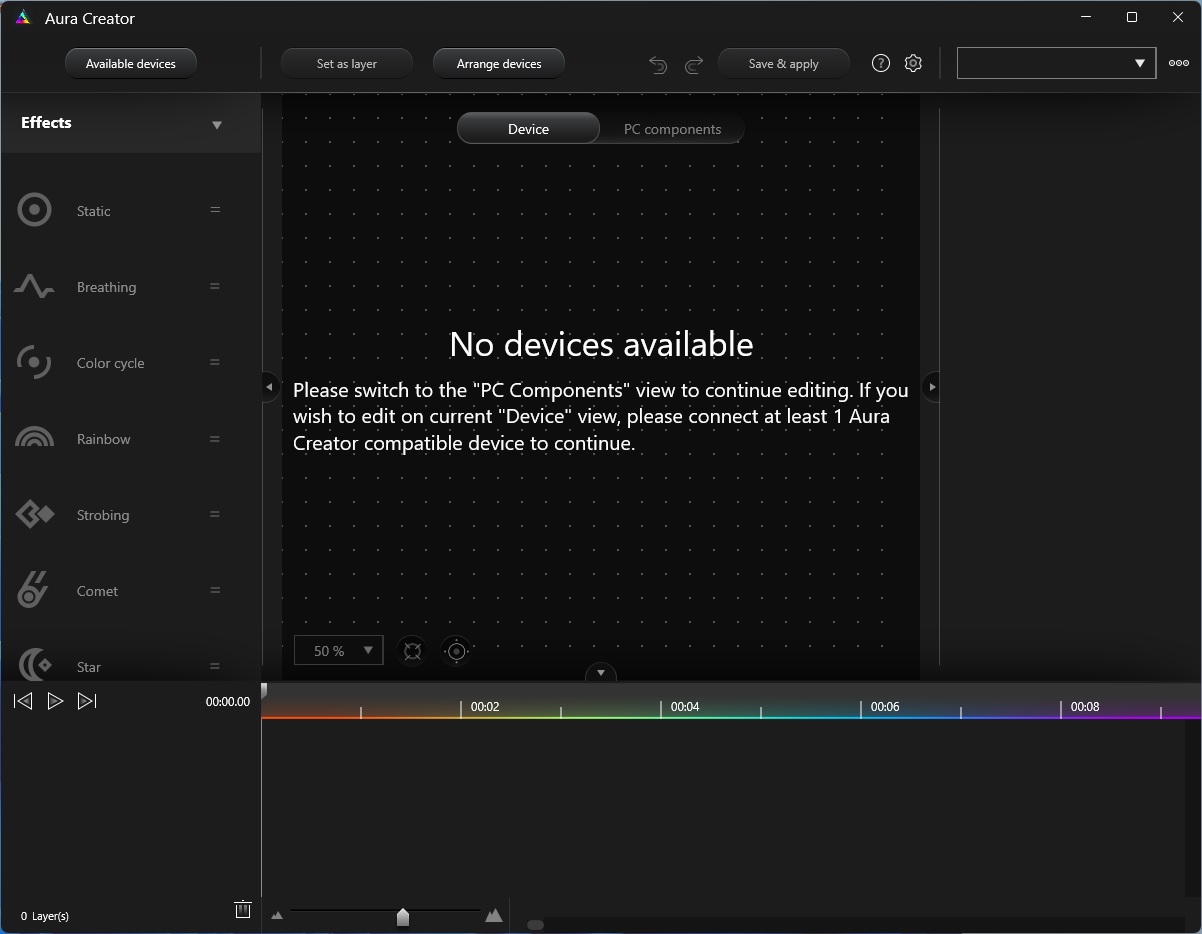

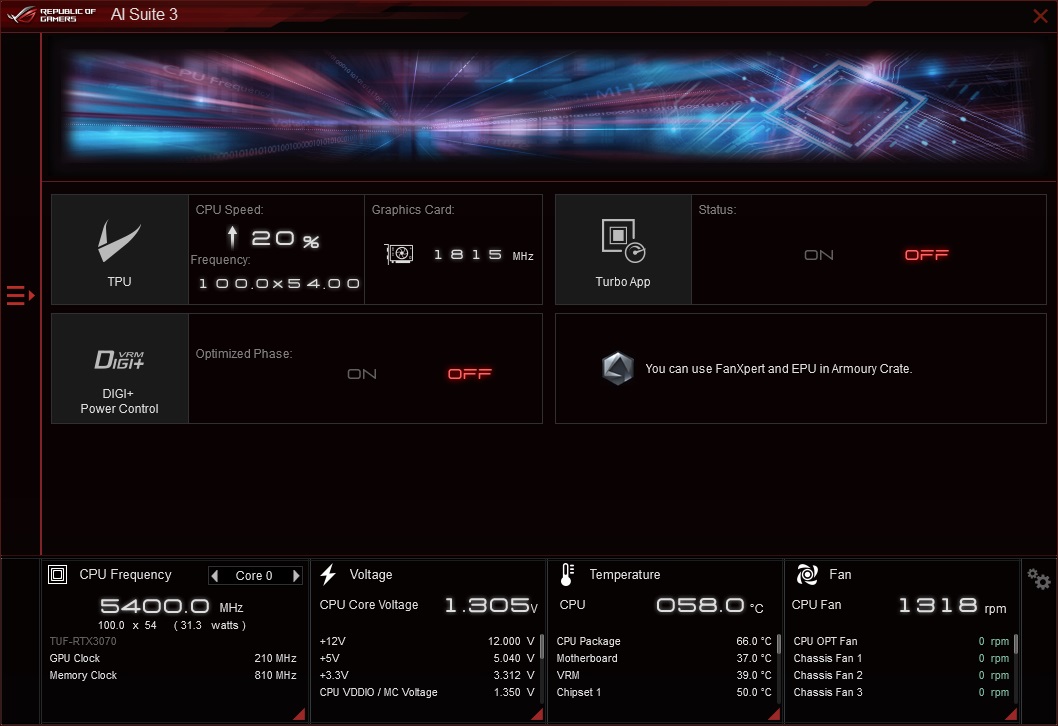
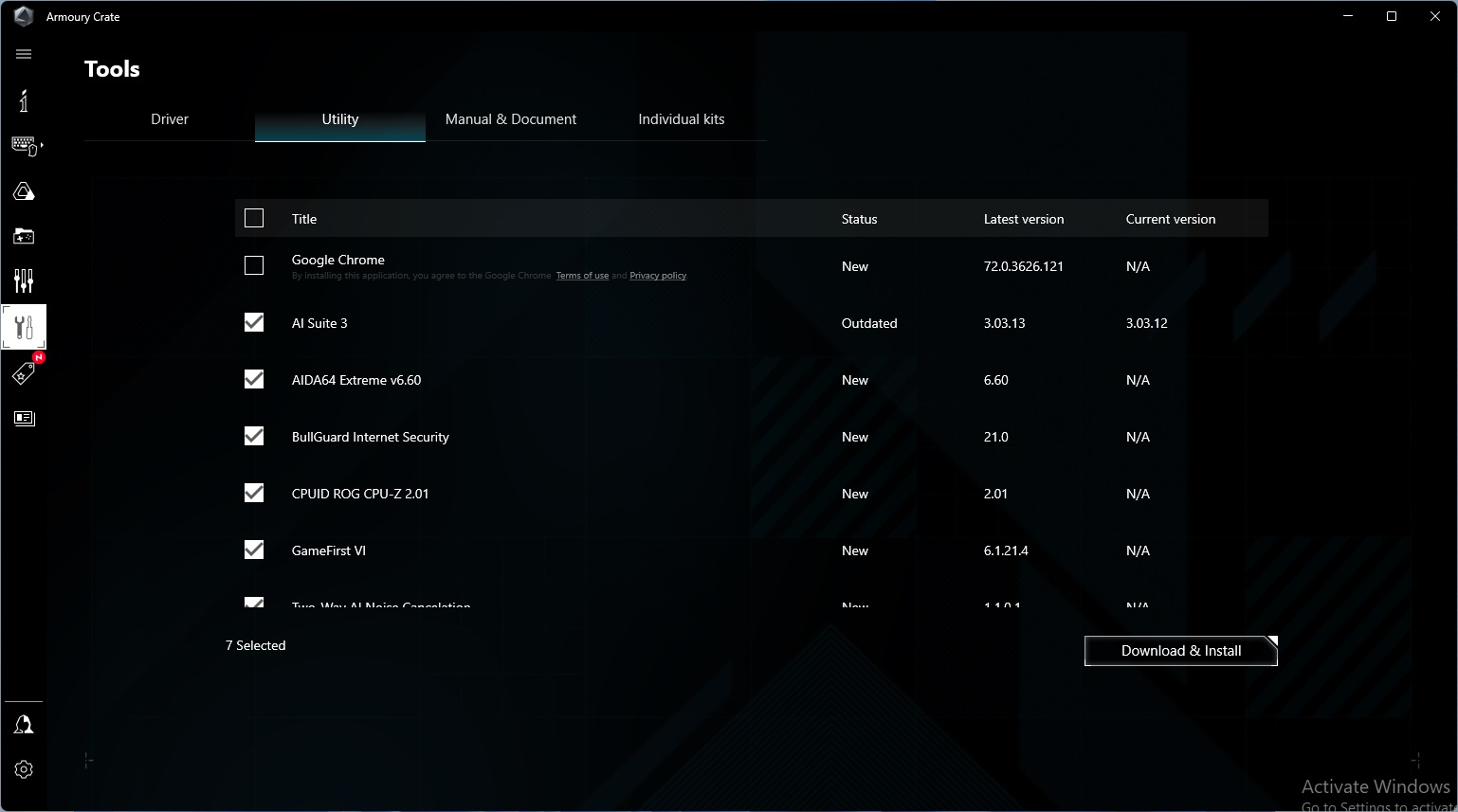

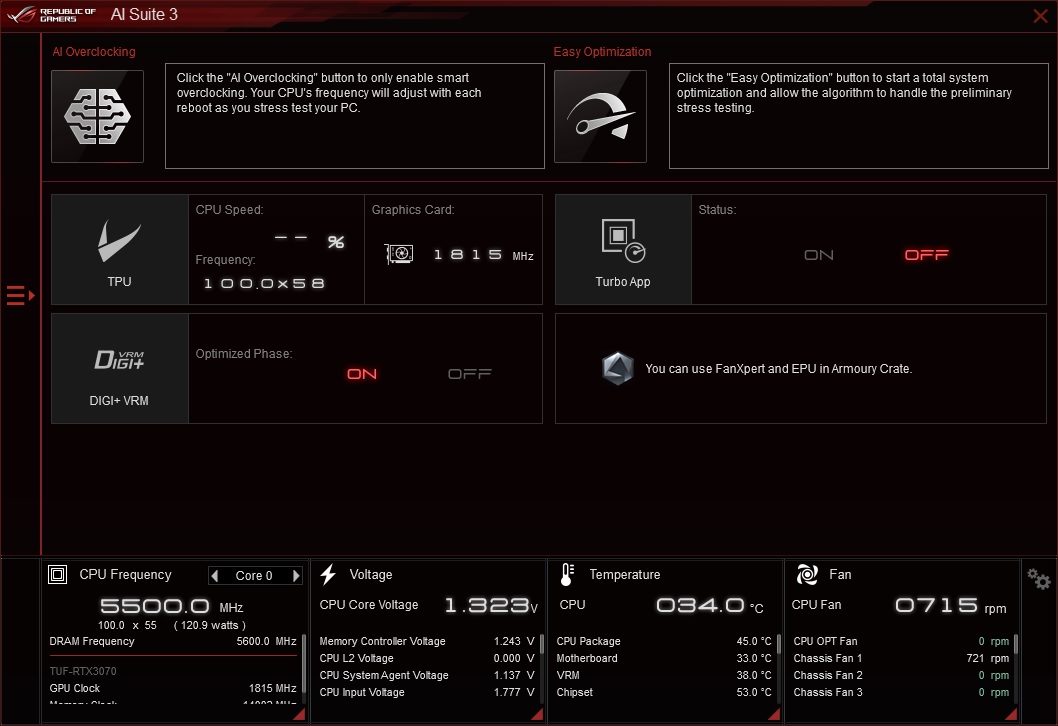
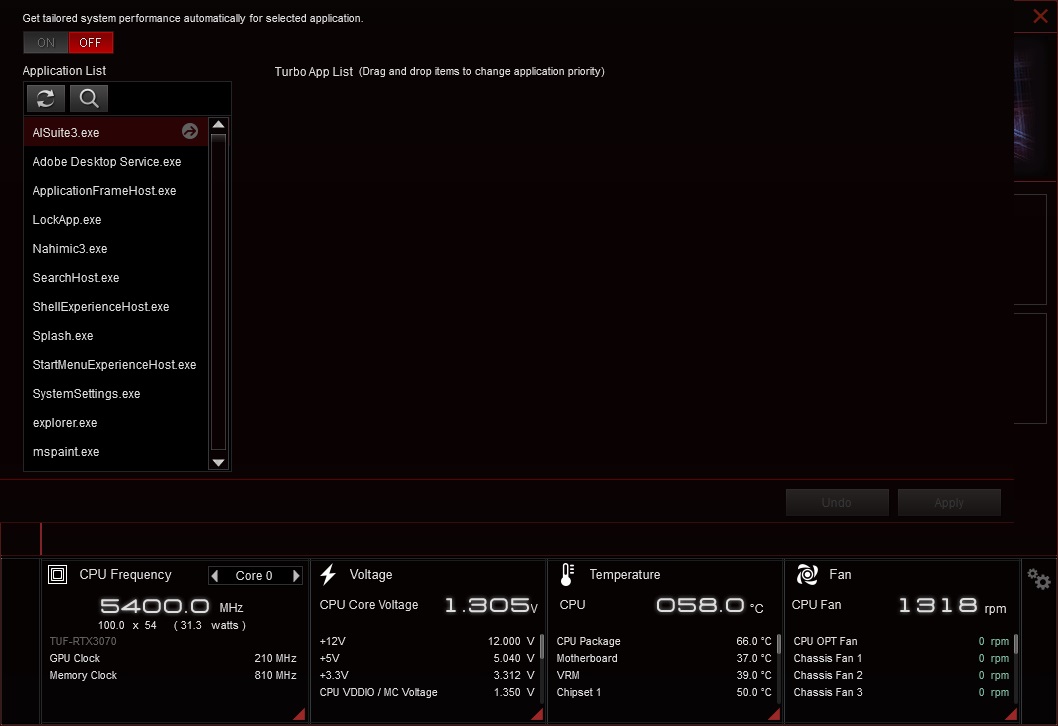
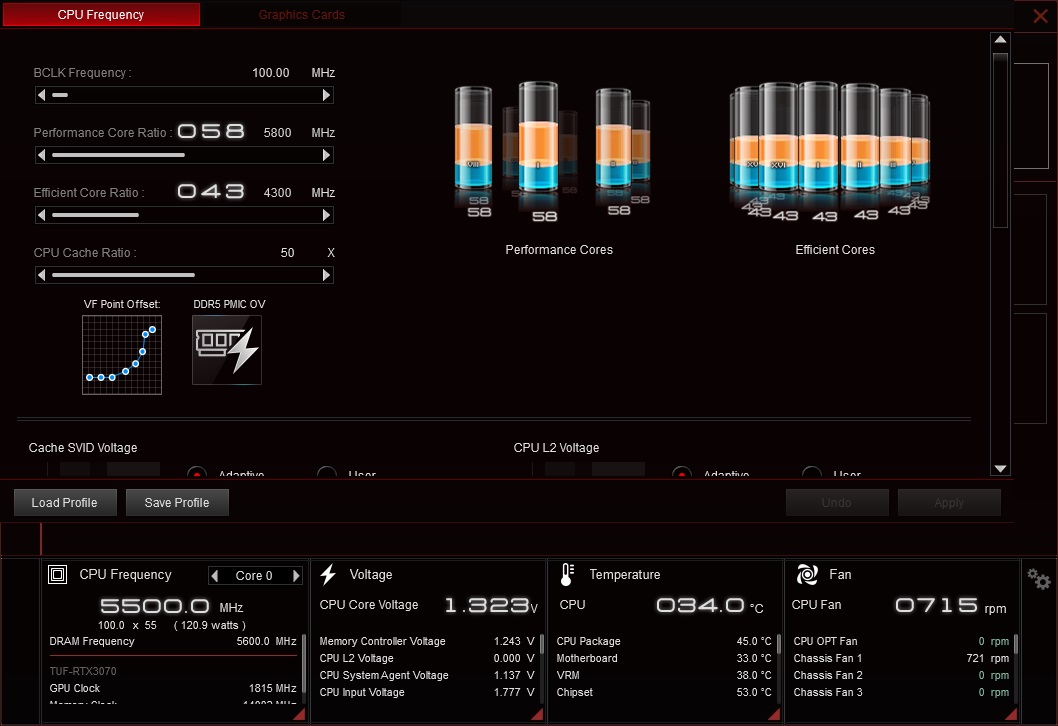
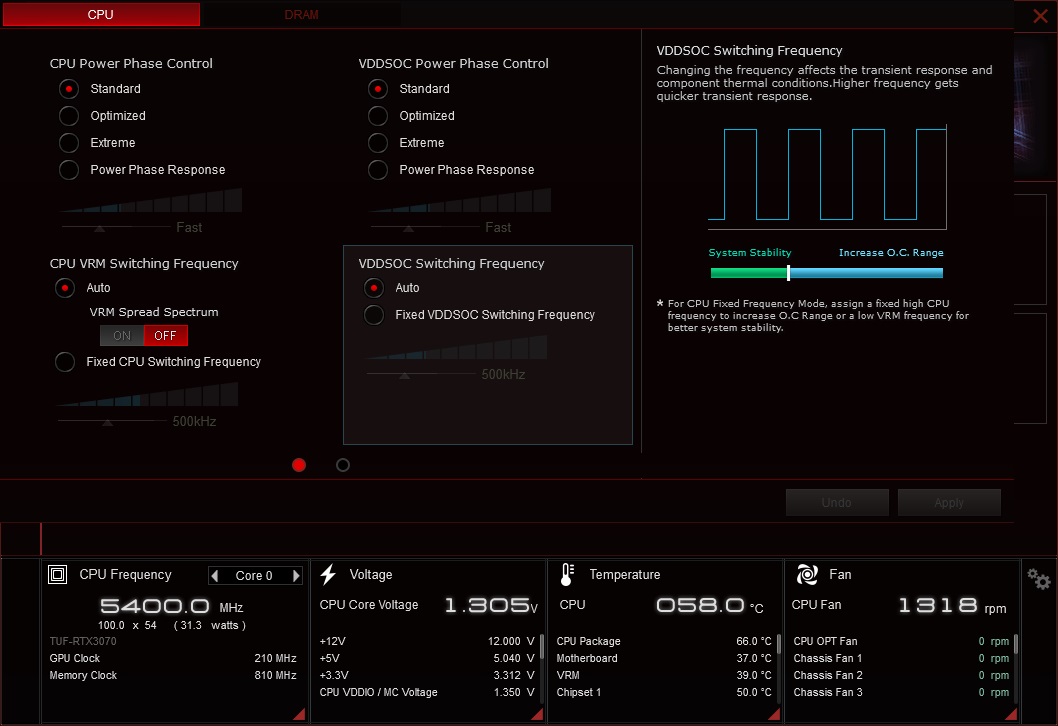

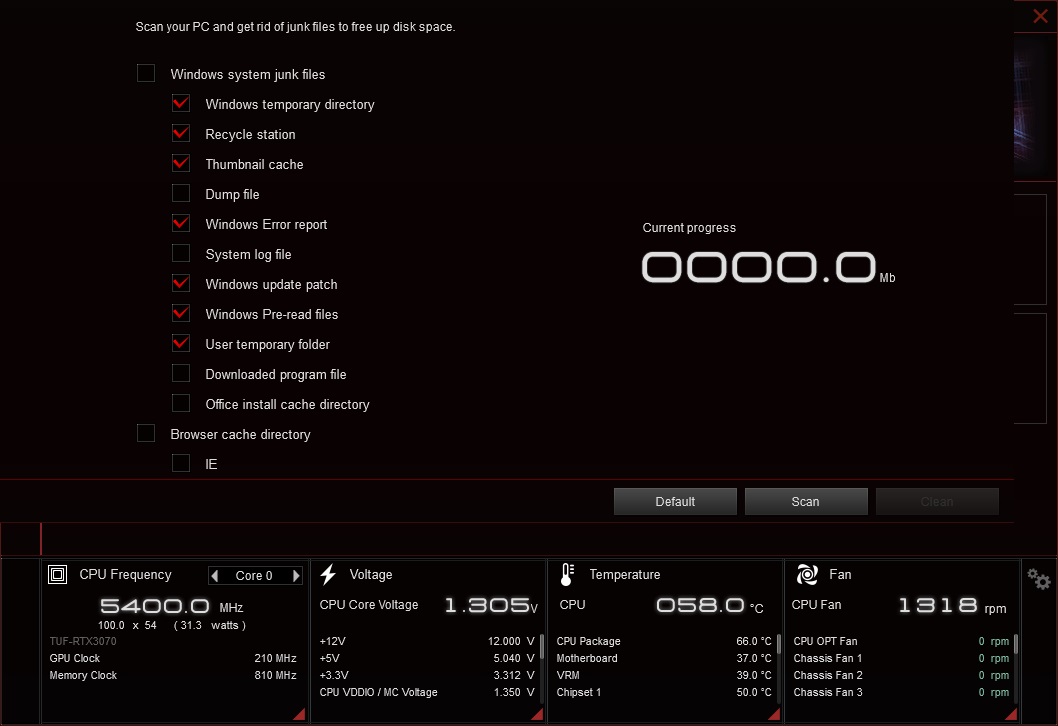
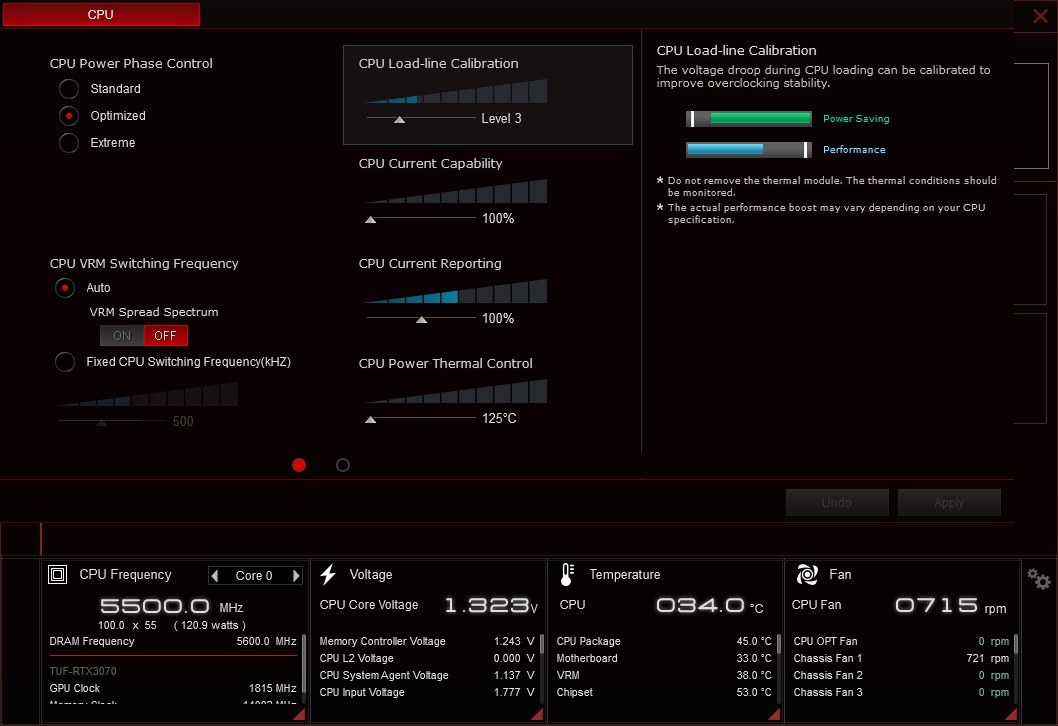



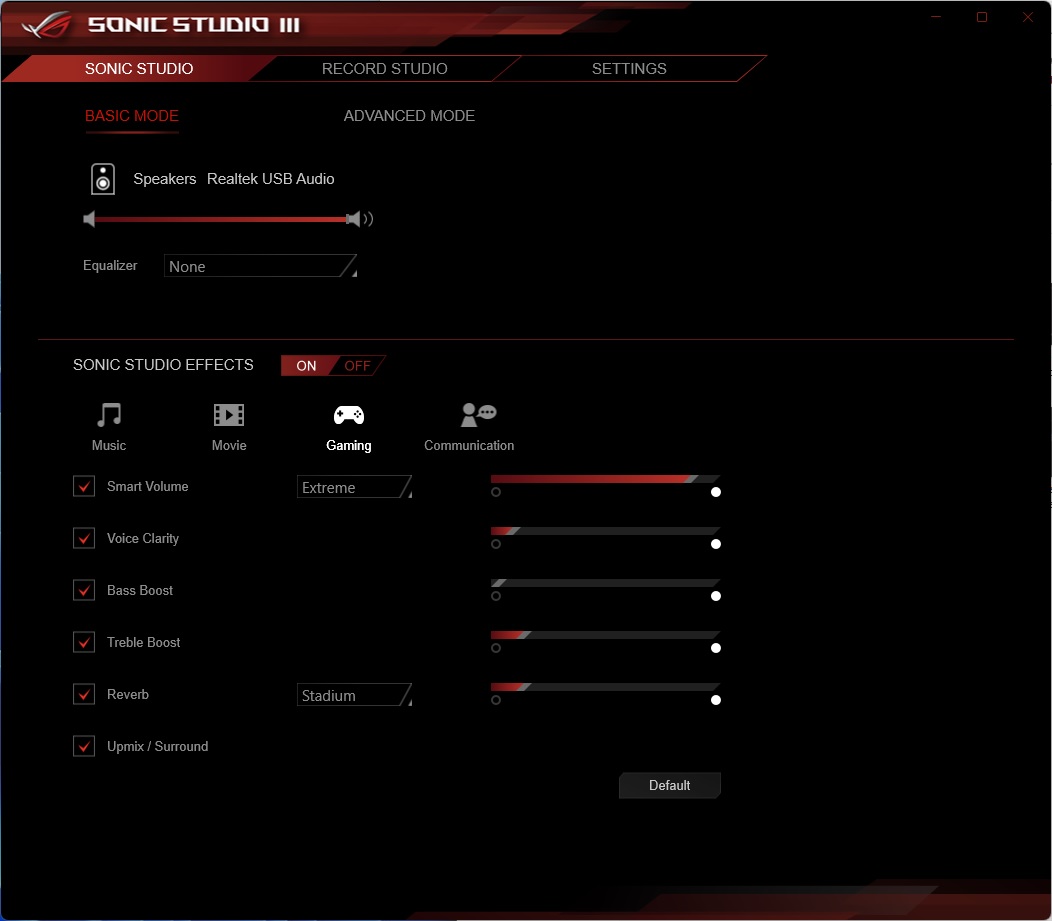
Test System / Comparison Products
We’ve updated our test system to Windows 11 64-bit OS with all updates applied. We kept the same Asus TUF RTX 3070 video card from our previous testing platforms but updated the driver. We also updated to F1 22 for our games and kept Far Cry 6. We use the latest non-beta motherboard BIOS available to the public unless otherwise noted. The hardware we used is as follows:
| CPU | Intel Core i9-13900K |
| Memory | GSkill Trident Z DDR5-5600 CL36 (F5-5600U3636C16GX2-TZ5RK) |
| Row 2 - Cell 0 | Kingston Fury Beast DDR5-6000 CL36 (KF560C36BBEAK2-32) |
| GPU | Asus TUF RTX 3070 |
| Cooling | Coolermaster MasterLiquid PL360 Flux |
| PSU | EVGA Supernova 850W P6 |
| Software | Windows 11 64-bit (22H2) |
| Graphics Driver | NVIDIA Driver 522.25 |
| Sound | Integrated HD audio |
| Network | Integrated Networking (GbE or 2.5 GbE) |
EVGA supplied our Supernova 850W P6 power supply (appropriately sized and more efficient than the 1.2KW monster we used previously) for our test systems, and G.Skill sent us a DDR5-5600 (F5-5600U3636C16GX2-TZ5RK) memory kit for testing.
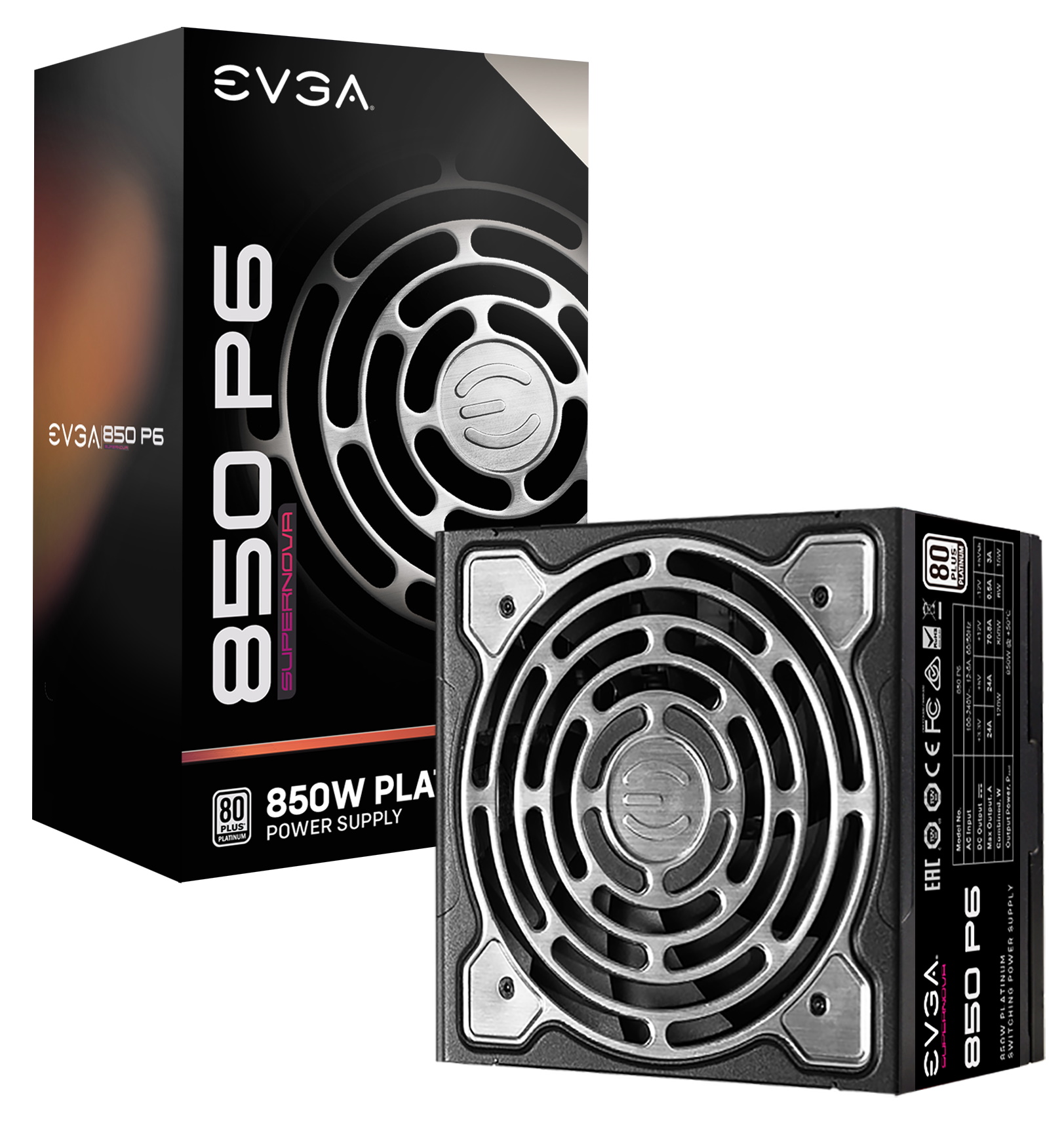



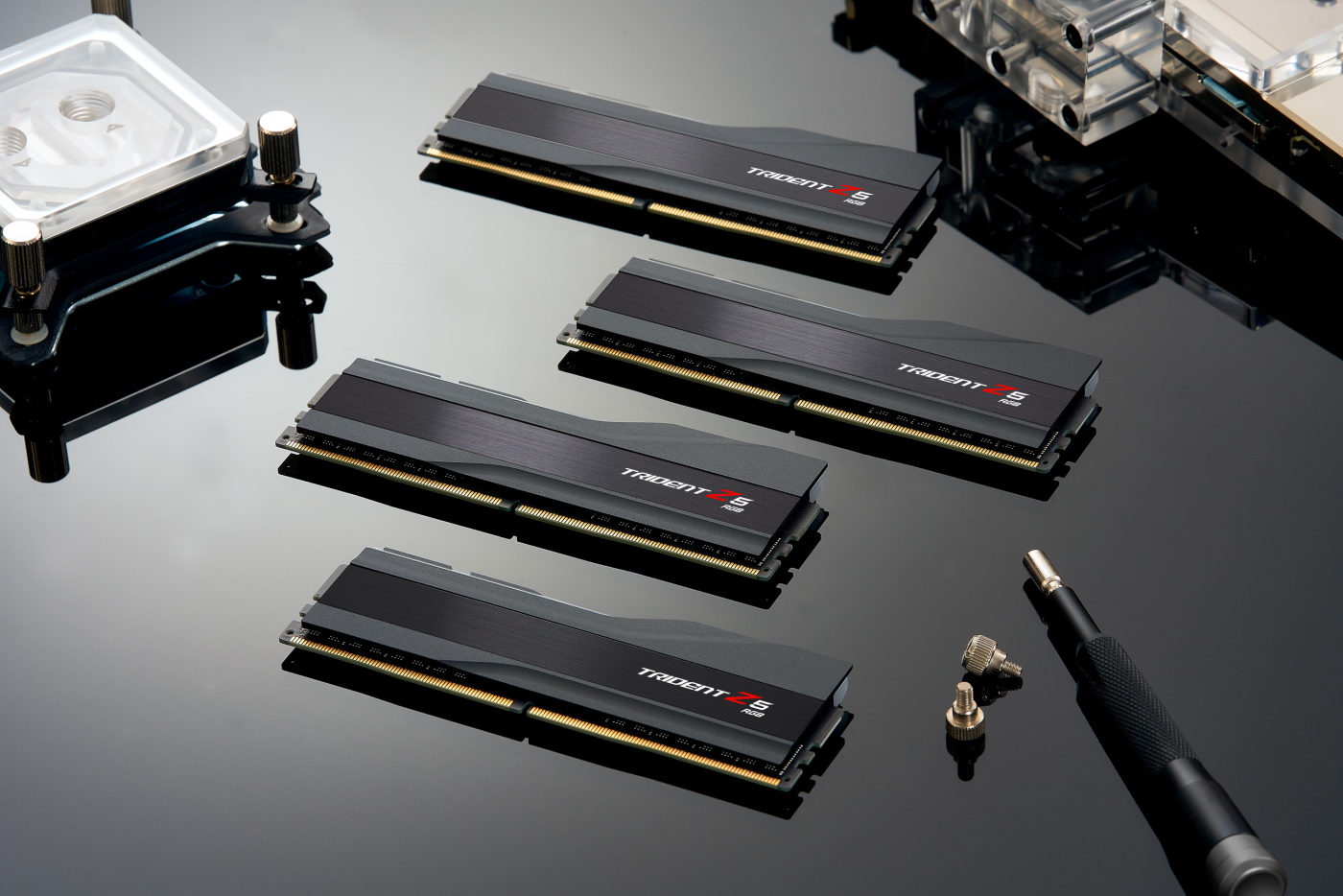

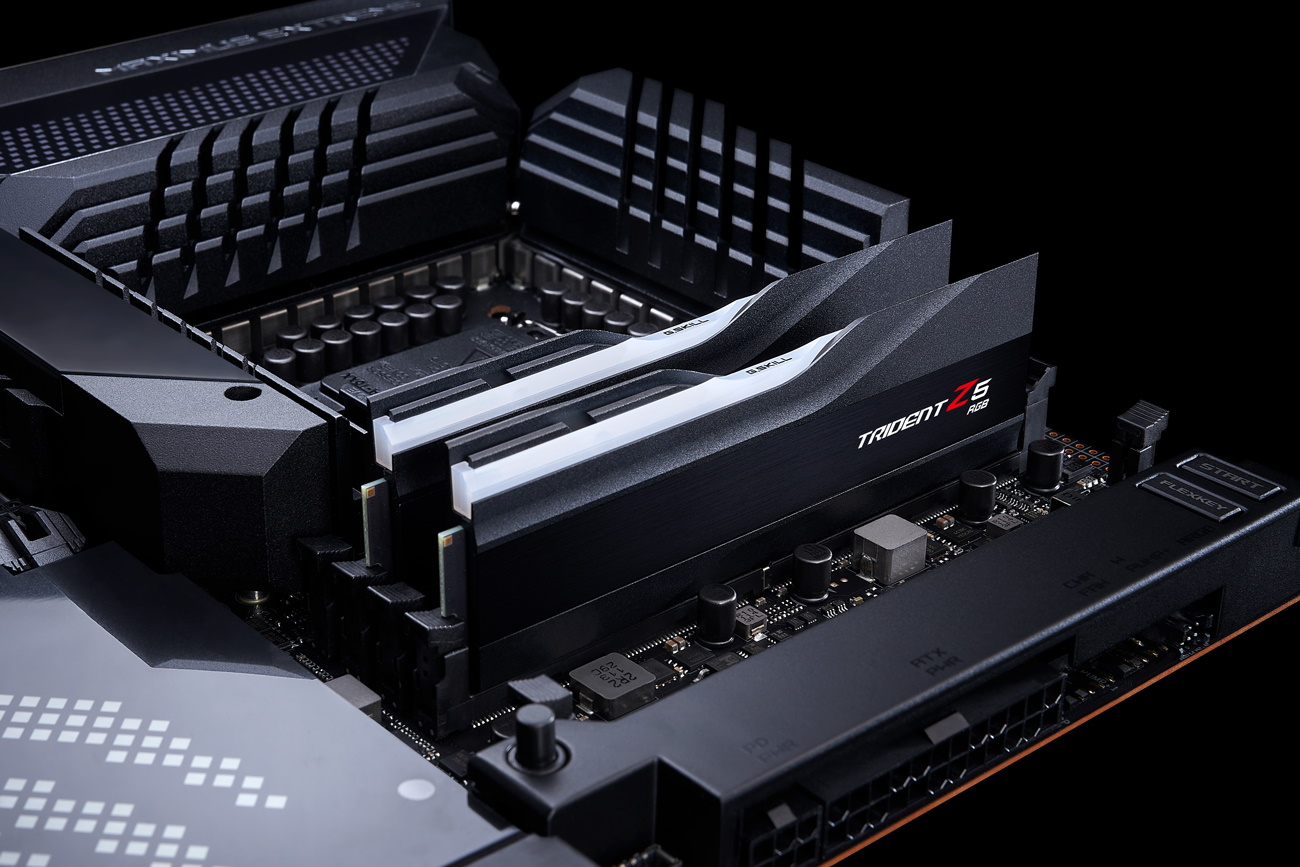
Benchmark Settings
| Synthetic Benchmarks and Settings | Row 0 - Cell 1 |
| Procyon | Version 2.1.459 64 |
| Row 2 - Cell 0 | Office Suite (Office 365), Video Editing (Premiere Pro 22.6.2.2), Photo Editing (Photoshop 23.5.1, Lightroom Classic 11.5) |
| 3DMark | Version 2.22.7359 64 |
| Row 4 - Cell 0 | Firestrike Extreme and Time Spy Default Presets |
| Cinebench R23 | Version RBBENCHMARK330542 |
| Row 6 - Cell 0 | Open GL Benchmark - Single and Multi-threaded |
| Blender | Version 3.3.0 |
| Row 8 - Cell 0 | Full benchmark (all 3 tests) |
| Application Tests and Settings | Row 9 - Cell 1 |
| LAME MP3 | Version SSE2_2019 |
| Row 11 - Cell 0 | Mixed 271MB WAV to mp3: Command: -b 160 --nores (160Kb/s) |
| HandBrake CLI | Version: 1.2.2 |
| Row 13 - Cell 0 | Sintel Open Movie Project: 4.19GB 4K mkv to x264 (light AVX) and x265 (heavy AVX) |
| Corona 1.4 | Version 1.4 |
| Row 15 - Cell 0 | Custom benchmark |
| 7-Zip | Version 21.03-beta |
| Row 17 - Cell 0 | Integrated benchmark (Command Line) |
| Game Tests and Settings | Row 18 - Cell 1 |
| Far Cry 6 | Ultra Preset - 1920 x 1080, HD Textures ON |
| F1 2022 | Ultra Preset - 1920 x 1080, Ultra High (default) Bahrain (Clear/Dry), FPS Counter ON |
MORE: Best Motherboards
MORE: How To Choose A Motherboard
MORE: All Motherboard Content
Get Tom's Hardware's best news and in-depth reviews, straight to your inbox.
Current page: Firmware, Software and Test System
Prev Page Features and Specifications Next Page Benchmarks and Final Analysis
Joe Shields is a staff writer at Tom’s Hardware. He reviews motherboards and PC components.
-
Kuricature It's a good review, but you're trying a bit too hard for a negative in the price even though Z790 is still better off than X670E, and this board is still cheaper than the MSI ACE which is the closest in features. I understand that a single board with most of the same features exists for cheaper, the ASRock Taichi, but ASRock also has the worst BIOS out of all of them. Gigabyte Master does not have Thunderbolt on top of last gen audio, and a couple small features like high power USB C, gold plated audio ports. Really minor stuff that would probably be worth saving $130 for most people but meh, this board isn't the worst offender. I ended up choosing it for my wife new build because it really did seem like the best option without jumping up to $800 AORUS Xtreme or $1000 Maximus Extreme, both of which only really add full shielding and a 10gb ethernet.Reply -
TechieTwo IMO Asus has always been able to exploit consumers by supplying tweaked mobos to reviewers. A company can only charge what people are willing to pay. If the Asus name means enough to be exploited then it's the mobo for you. If not then there are numerous other brands that offer virtually identical performance even when OC'd so why get hosed?Reply -
helper800 Reply
Just because the end result is the same does not say anything of the journey getting there.TechieTwo said:IMO Asus has always been able to exploit consumers by supplying tweaked mobos to reviewers. A company can only charge what people are willing to pay. If the Asus name means enough to be exploited then it's the mobo for you. If not then there are numerous other brands that offer virtually identical performance even when OC'd so why get hosed? -
Hellmut1956 Reply
I have purchased an ASUS Maximus XIII Extreme motherboard shortly before Intels 12 Generation CPU was released and that purchase was more expensive, For me to purchase such a motherboard has more to do with a need for a much more powerful power supply and the connectors that fit to a RTX4090 motherboard. This means that any upgrade is basically a new PC purchase.Admin said:The Z790 Hero is an attractive and very well-equipped motherboard from the ROG Maximus Family. For a costly $630, you get a PCIe 5.0 M.2 socket, 40 Gbps Type-C ports, overbuilt power delivery, and a flagship-class audio solution.
Asus ROG Maximus Z790 Hero Review: Holding Out for a Price Drop : Read more -
CSMajor The Taichi has the same "specs", but when you load it up the PCIe lanes get used up and you don't actually get the full bandwidth possible from the CPU/Chipset. I've had both (and the MSI Carbon WIFI) and that was a signficant different for those use cases that require bandwidth.Reply
Definitely not a low end board, but it's not true to say they have all the same things... -
jaquith Reply
For starters I own the ASUS ROG Maximus Z790 Extreme, and last generation I purchased both the Hero and TUF Z690 variants. So the valid question would be why? People get singularly fixated on irrelevant things like the expense, and I'd point out that both the current Hero and Extreme Z790's are all sold out along with the all the MSRP RTX 4090s. So getting back to the answer, the mere fact of having the core parts of your system not only running smoothly but also prolonging the life of every component connected to it has a huge value. My analogy would be I can buy a half inch stainless steel bolt or a plated pot metal bolt .. How are both going to hold up after a time in the elements? Fine tuned power delivery, extreme options and next generation components are key.Admin said:The Z790 Hero is an attractive and very well-equipped motherboard from the ROG Maximus Family. For a costly $630, you get a PCIe 5.0 M.2 socket, 40 Gbps Type-C ports, overbuilt power delivery, and a flagship-class audio solution.
Asus ROG Maximus Z790 Hero Review: Holding Out for a Price Drop : Read more
In my case, I was able to take two matching DDR5 kits because there are no fast "quad kits" and easily achieved DDR5-6200 and faster in 4 x 16GB configuration and 6GHz and faster on an i9-13900K was incredibly easy and in both cases rock solid. I should add, that unless you're going to put top notch and components and overclock then obviously ASUS ROG motherboards aren't a good choice. Instead, they're meant for the hobbyist extremist.
My only real complaint of Z790s in general are the poor use of the PCIe 5 M.2 .. the manuals are extremely vague, but you'll quickly discover that populating the PCIe 5 M.2 slot retards the top PCIe 5 slot (GPU Slot) to x8 versus x16, and there is no conservation of bandwidth of PCIe types 4 vs 5. In my case, I have 3x M.2 SSDs and I'm faced with having to move one of them to the higher latency M.2 slots or cut my RTX 4090s PCIe x16 to x8 .. and in my case spending over $1,000, I don't like to have to make compromise choices that didn't present themselves in the prior Z690s. IMO a major Z790 PCIe 5 x16 vs x8 flaw.
https://valid.x86.fr/9yk75j
